

Brussels Architecture Tours: Belgian Walking Guide
Brussels architecture walking tours, Belgian building guides, Architectural walks Belgium, Architects
Brussels Architecture Tours
Belgian Architecture Guides – Building Walks tailor made for groups visiting Belgium.
post updated 14 March 2024
Book your city guide: email isabelle(at)e-architect.com
Brussels Architecture Tour: Exclusive Guided Walks – Introduction
e-architect have architectural tour guides in most of the key cities across Europe.
Our Brussels guided tours are all tailored to suit each booking we do not allow for bookings to be joined. Our guided tours in Brussels are all exclusive to each client.
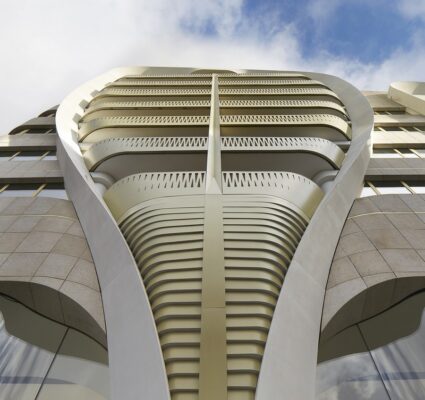
Brussels Architecture Walking Tours
Should you be planning a conference, an office trip, or university trip in Brussels please contact us and we would be happy to take your booking.
Brussels is the largest Belgian city and the capital of Belgium. It is located roughly in the centre of the country, close to the North Sea. The city has a wealth of good contemporary architecture, all possible to visit on our Brussels Architecture Tours . Recent key openings include the -:
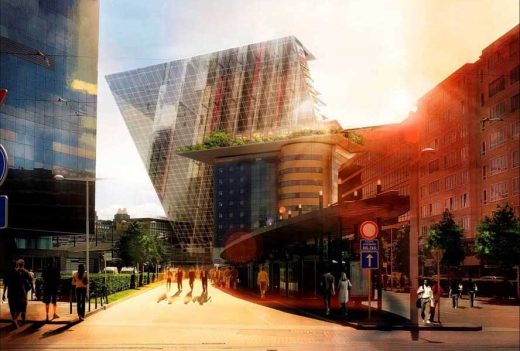
Famous architects with buildings in the city include Jean Nouvel and sca Architectes Associés. Other key architects with work in the city include ATELIER BRÜCKNER and PARK Associati.
Brussels Walking Tours
Brussels Architectural Tours can focus on historical buildings, contemporary buildings or a mixture of both. The Brussels Architecture Tour is typically an introduction to the city’s newest buildings, but it can be tailored to your group’s interests, for example social housing or retail interiors.
Brussels Architecture – Key Buildings
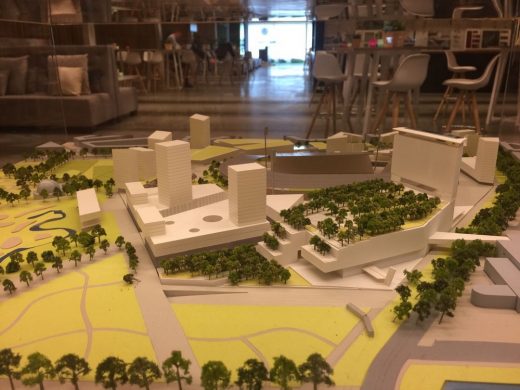
We can provide limited advice for Walking Tours of Brussels about types and areas of buildings in the capital of Belgium . Our guides for the Brussels Architectural Tours should be able to meet your needs and interests.
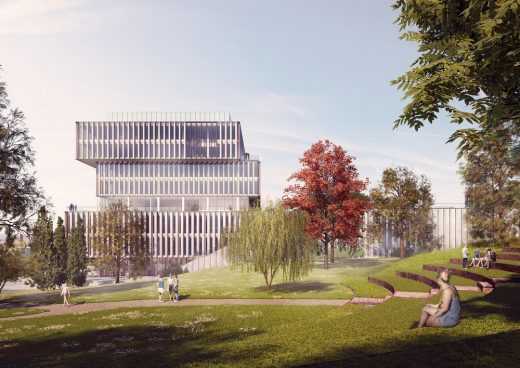
We can provide information on programme, geographical areas and building types up to a year ahead of your architectural walking tour. For example a group of architects interested in innovative Belgian housing or office buildings could be provided with tailored information allowing an architectural tour programme to be agreed prior to their visit to Belgium.
Our guides typically meet visitors at the starting point of their Belgian walking tour, but by request might be able to meet them from the airport or their accommodation.
e-architect also offer combined tours with Rotterdam, Amsterdam or Paris.
Brussels Architectural Walking Tours
Contact e-architect to arrange your architectural tour of the Belgian capital: isabelle(at)e-architect.com / mobile +44 (0)7952 149814
Architecture Tours
e-architect also organise architecture walking tours in other west European cities such as Amsterdam, Rotterdam, Copenhagen, Edinburgh, Berlin, London, Barcelona and Paris.
Architecture Walking Tours – city walks
Belgian Architectural Designs – chronological list
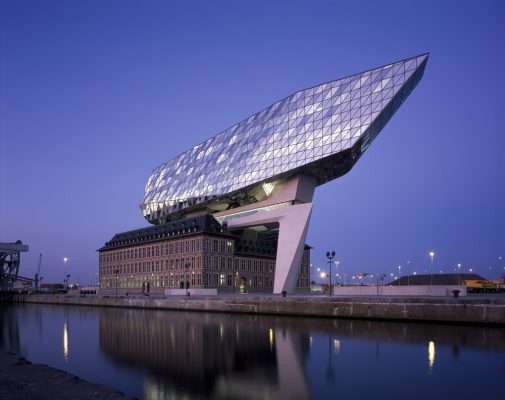
Location: Brussels , Belgium, western Europe
Belgian Architecture
Belgian Building News
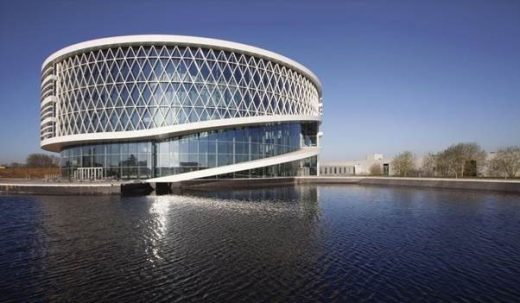
Belgian Buildings
Belgian Building Designs
Belgian Architect Studios – design office listings
New Buildings in Belgium
Contemporary Architecture in Belgium – architectural selection below:
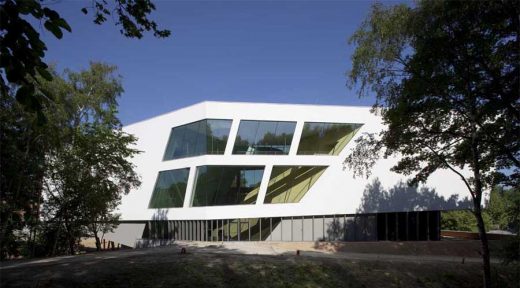
Selection of key recent architectural designs in the Belgian capital city featured on e-architect:
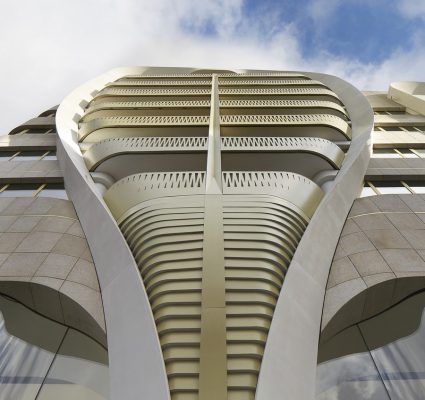
Comments / photos for the Brussels Building Tours – Belgian Architecture Guides – Belgium Architectural Walks by e-architect page welcome.

Project Description
Tours in brussels, the capital of europe.
Capital of Belgium and of Europe, the City of Brussels is the largest city of the country and administrative seat of many institutions of the European Union . A city with a high quality of life, known for its culture and gastronomy and which hosts an infinity of theaters, museums, parks, shops and cafes. There is no doubt that the city has been the inspiration for the author Hergé to create the scenarios for the characters of Tintin.
With a lot of diversity, the Belgian capital has much more to offer than chocolate and beer! Brussels boasts a large Art Nouveau and Art Deco heritage , funky facades painted as comics, traditional Flemish architecture as well as contemporary architecture . The works of Victor Horta and Paul Hankaro, the iconic Atomium, by Engineer André Waterkeyn impress both professionals and amateurs.
Check out our architectural and design tours in Brussels , oriented to design, urban planning and architecture in Brussels, or request that one of our architects prepare a customized itinerary. All our guides are professional architects, who will be happy to prepare your tailor made itinerary . From Artchitectours we can organize your private tour to Brussels, study trip or incentive trip as well.
Ask us for the options of tours in Brussels
Leave a comment cancel reply.

- Privacy Overview
- Strictly Necessary Cookies
- 3rd Party Cookies
- Cookie Policy
This website uses cookies so that we can provide you with the best user experience possible. Cookie information is stored in your browser and performs functions such as recognising you when you return to our website and helping our team to understand which sections of the website you find most interesting and useful.
Strictly Necessary Cookie should be enabled at all times so that we can save your preferences for cookie settings.
If you disable this cookie, we will not be able to save your preferences. This means that every time you visit this website you will need to enable or disable cookies again.
This website uses Google Analytics to collect anonymous information such as the number of visitors to the site, and the most popular pages.
Keeping this cookie enabled helps us to improve our website.
Please enable Strictly Necessary Cookies first so that we can save your preferences!
More information about our Cookie Policy
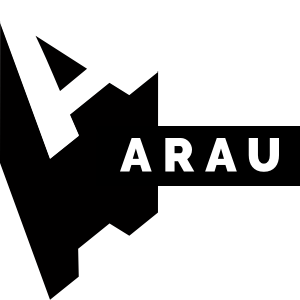
Understand Brussels to better defend it!
Since 1977, ARAU has been a pioneer of urban tourism in Brussels and has offered unconventional guided tours that raise awareness of urban democracy and the role of residents in the development of their city. Over the decades, ARAU has also developed an expert knowledge of the city’s architectural and planning history , which it has passed on through its programme of guided tours that continue to play an essential role in the defence of the heritage buildings of Brussels . To learn more about the city’s best features, while at the same time developing a critical view of past and planned developments, join us!
Our programme of guided tours is divided into 8 main themes: “ Must-sees ”, “ Architecture ”, “ Brussels in districts ”, “ The city in transformation ”, “ Summer trails “, “ The Brussels House Through Time ” , “ Brussels, City of Trams ” and “ Social Brussels.
On request, ARAU can tailor all of its guided tours to the particular requirements of your group, throughout the year.
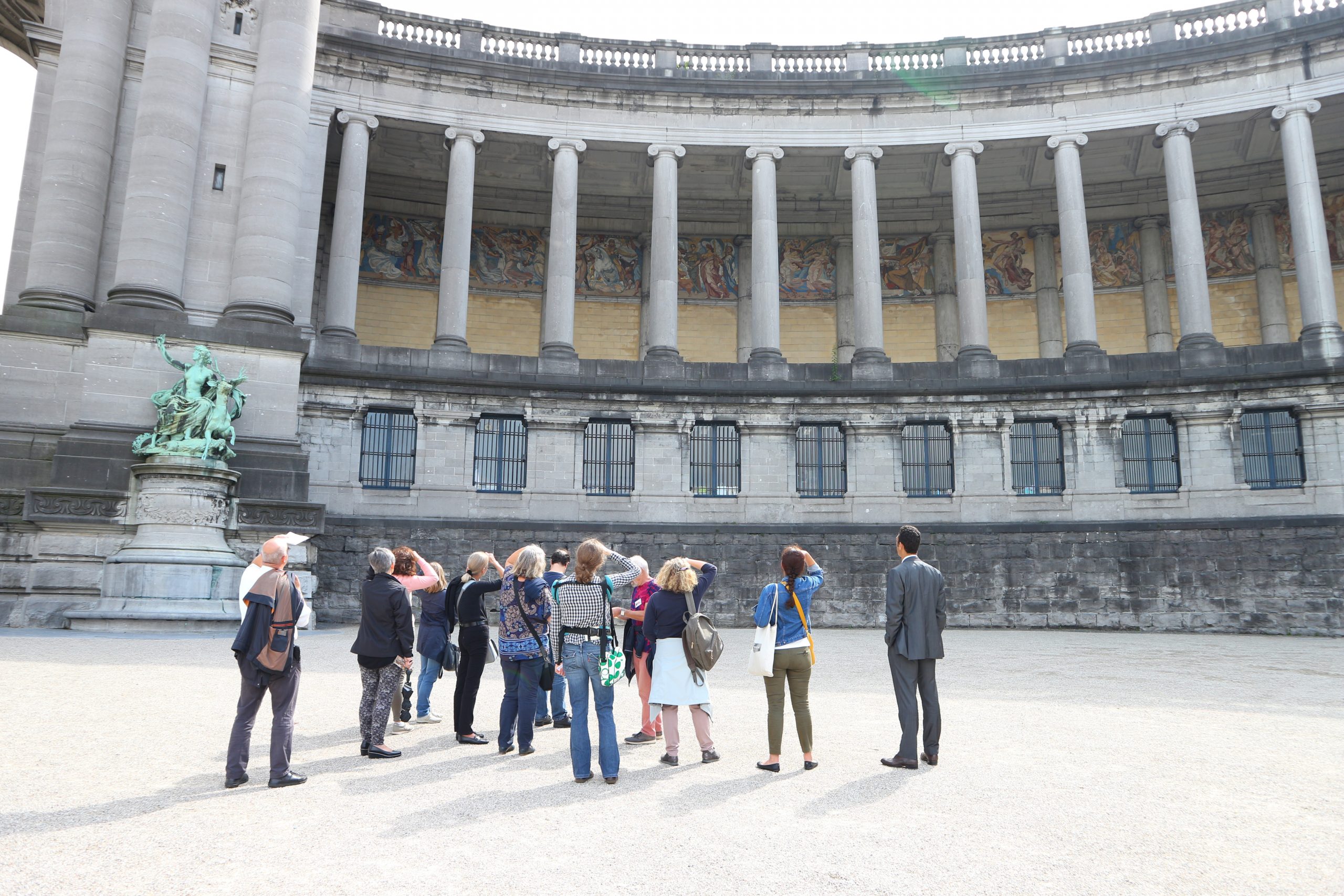
The buildings around the Grand’Place of Brussels, described as a “marvel” by the French writer Victor Hugo, have just undergone a comprehensive renovation that has restored all their splendour. Art Nouveau, a style conceived in the minds of a handful of genius designers, reminds us that Brussels was at the forefront of the artistic avant-garde at the end of the nineteenth century. The European district is home to some of the most important EU institutions: the Commission, the Council of Ministers, the Parliament and the Economic and Social Committee, placing it at the beating heart of the EU. These three unmissable guided tours examine each of these themes in depth.
View all guided tours
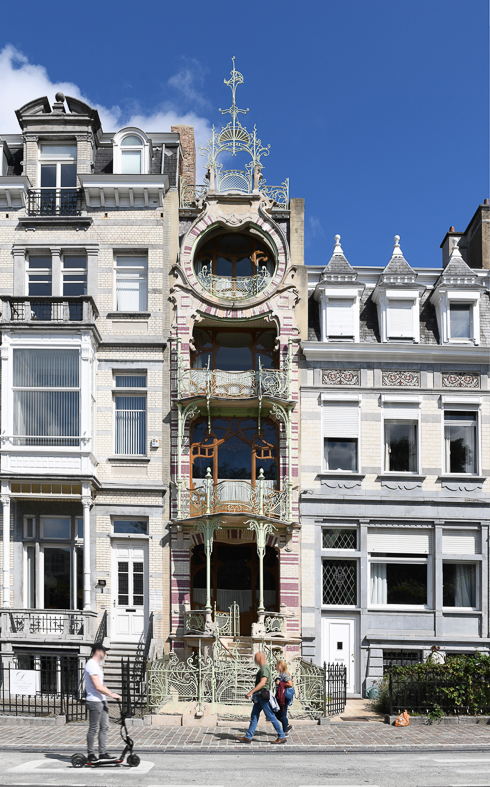
Architecture
Brussels has an extraordinarily rich and diverse architectural heritage. The gilded Baroque style of the buildings around the Grand’Place reminds us of the city’s glorious past. The Royal District is one of the most beautiful Neo-Classical ensembles ever built. Brussels is the “Capital of Art Nouveau” due to its many buildings in this distinctive style designed by Victor Horta, Paul Hankar and their disciples. In the inter-war years (1918-1939) Brussels did not miss out on the new Art Deco style, and is home to several iconic buildings in this style that are well worth a detour. Our “Architectures” guided tours reveal extraordinary buildings in every district of the city and place them in their historical contexts.
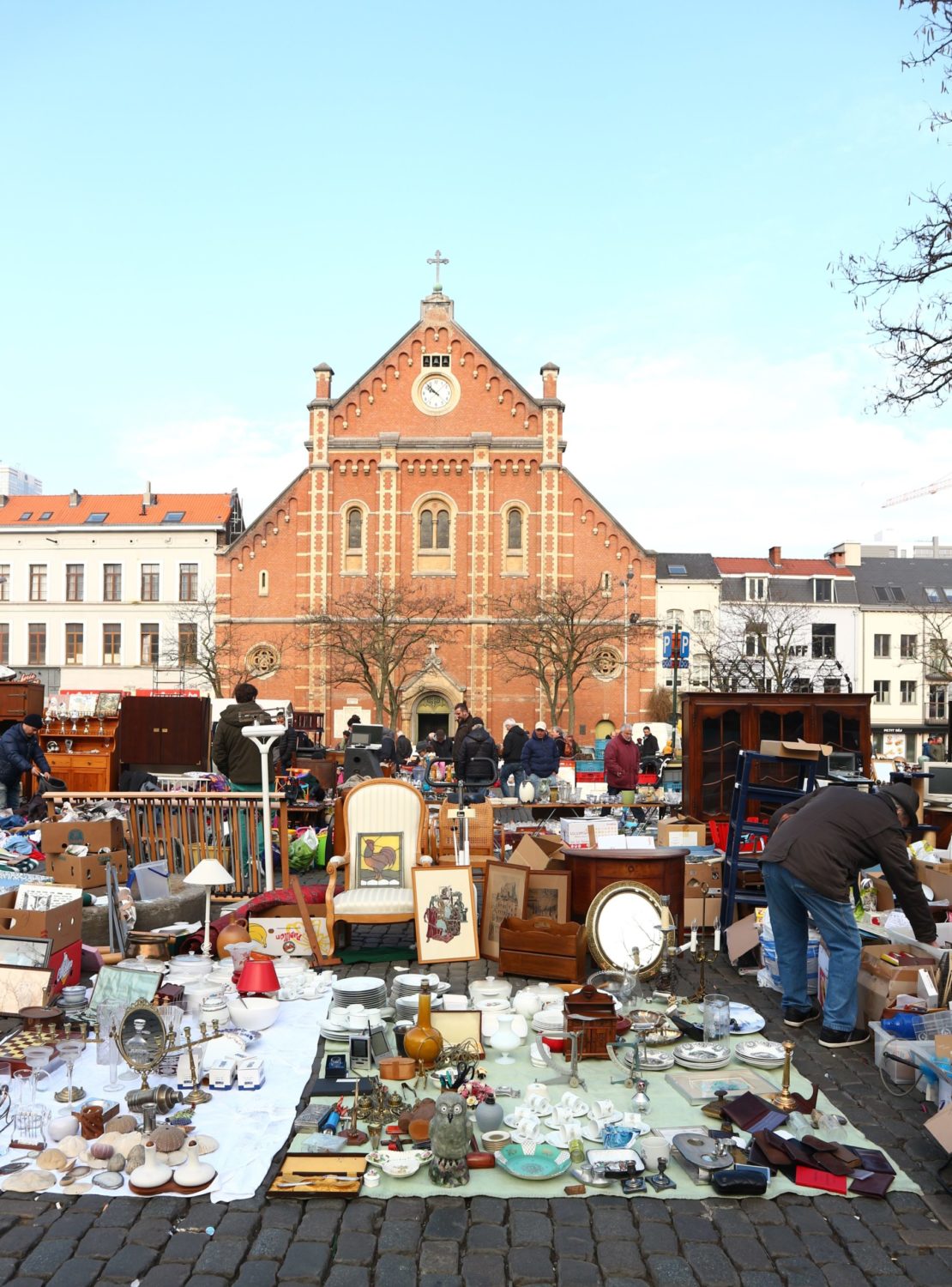
Brussels in districts
The development of the city and region of Brussels cannot be dissociated from that of the 19 communes and their hundred-or-so districts. From villages that have expanded from their centres, to planned new suburbs, these districts developed in a wide variety of heritage contexts, which ARAU will help you appreciate, along with their urban planning and architectural specificities. And, as thriving urban democracies all begin at a local level, these guided tours will include time for discussion about current proposals with the local residents who will be affected by them. An opportunity to understand our heritage environment and also the urban-planning processes, so as to be better equipped to take action in our own districts and for the city!
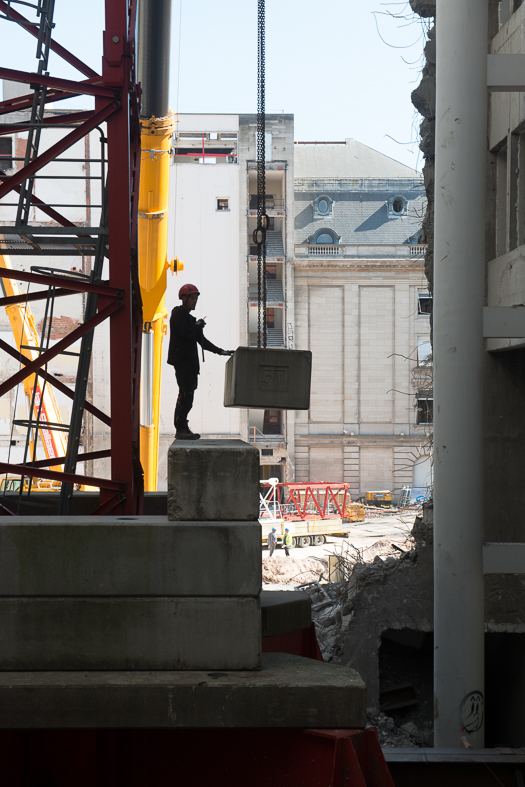
The city in transformation
ARAU has built on its analyses of urban development projects over more than 50 years to create these politically engaged and well-documented guided tours, that offer opportunities to critically unpick current urban planning projects, ranging from (re)conversion to (re)construction, and including debates on types of use for buildings and their impacts on the daily lives of residents. The routes followed show participants the issues around renovation projects and question their impacts on the city as a place to live. The guided tours travel around buildings or public spaces with outstanding heritage value. They aim to enrich the debate about the urban development of Brussels and offer an engaged reading of the city’s ever-evolving history.
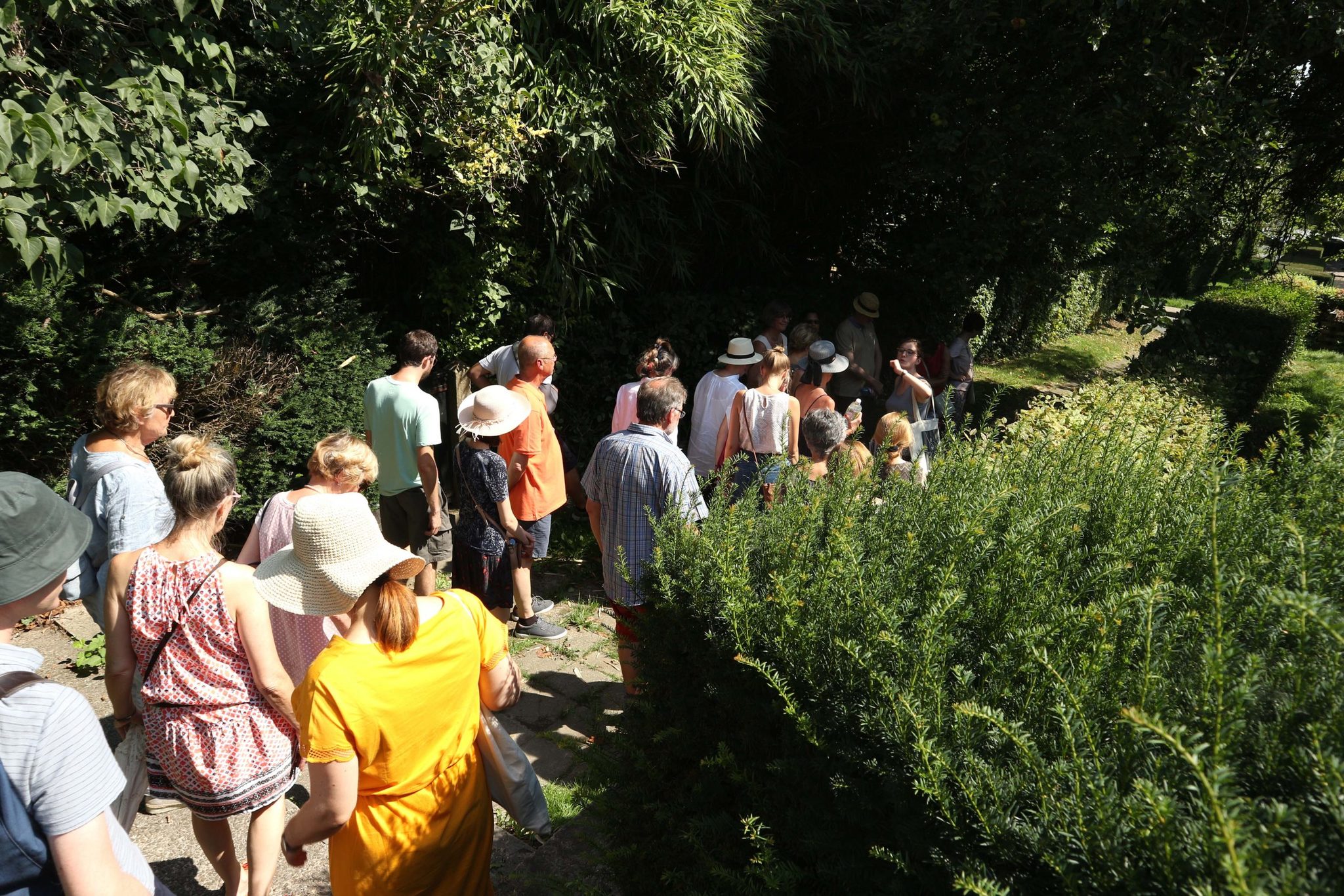
Summer trails
ARAU now offers a new programme of short guided tours to make the most of long summer evenings in Brussels. Our guides have prepared ten new guided tours of areas off the beaten track in French and in English. These concentrated guided tours offer opportunities to discover less-well-known places and unusual themes: to be enjoyed without restraint the whole summer long!
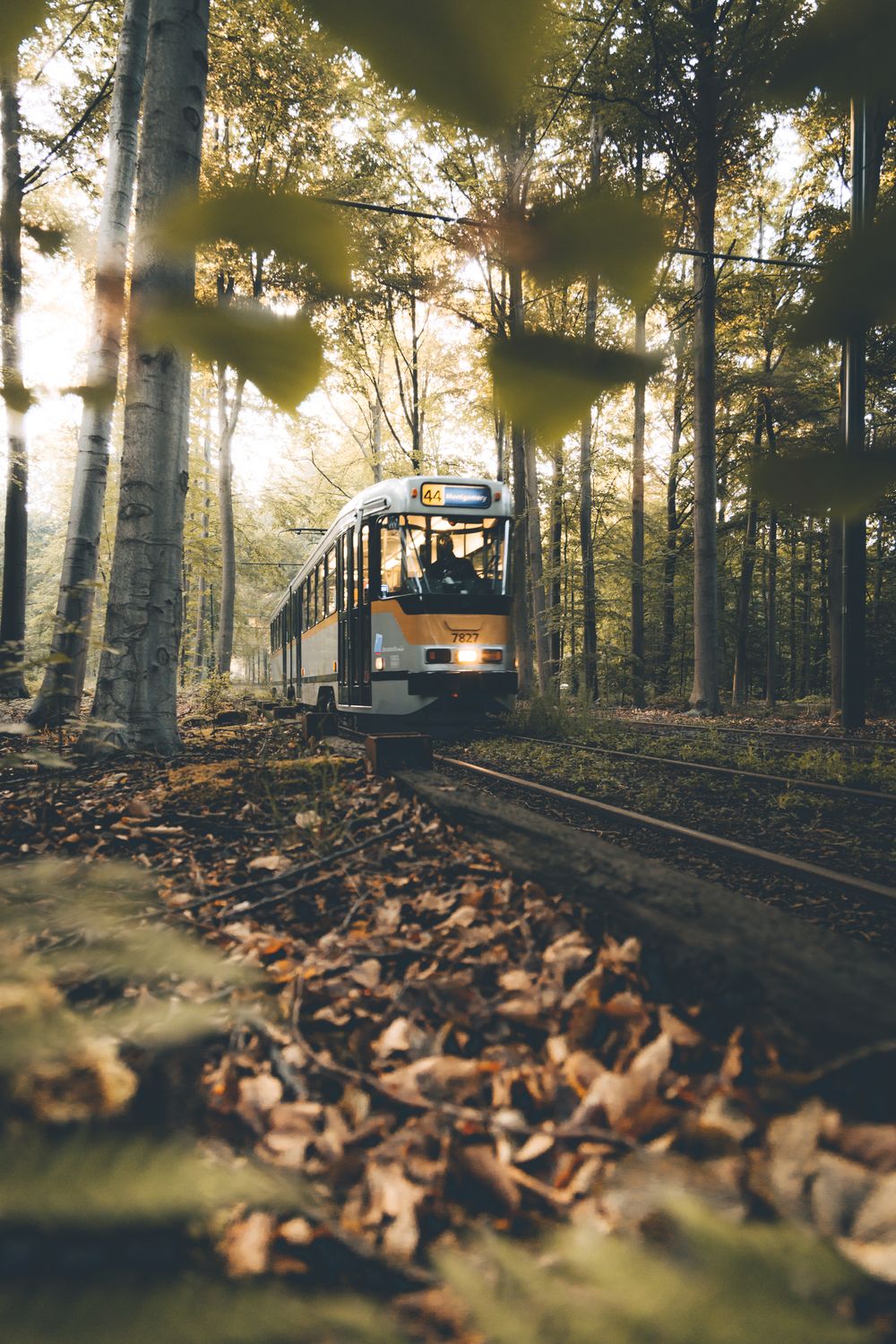
Brussels, City of Trams
The tram was and remains a major tool for urban expansion and provides an excellent means of exploring cities. While trams have disappeared from many European capitals, Brussels retains a dense tram network that contributes to the city’s identity. ARAU celebrates the city’s trams in several of its guided tours. Participants are equipped with earpieces into which the guide murmurs everything you always wanted to know as you cross the city and watch its buildings and landmarks pass by. The history of the city, its architecture and urban mobility blend along the tram tracks as we travel along the iconic routes of its tram network. A truly immersive guided tour.
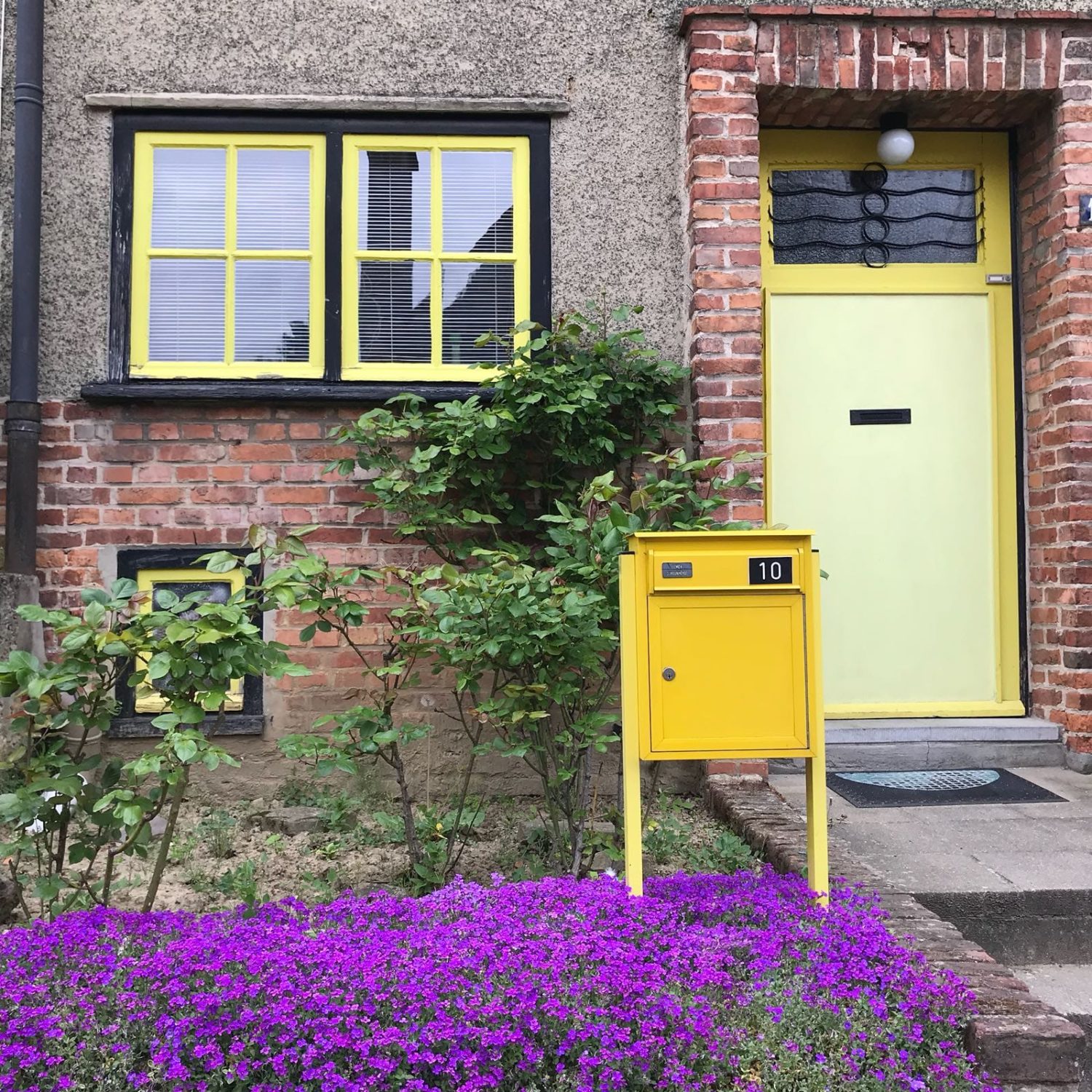
Social Brussels
The garden suburbs of Brussels celebrate their centenary in 2022: an excellent opportunity to immerse yourselves in the long story of the fight for accessible and decent housing in Brussels and to wander across the whole region to explore the huge amount of architectural and town-planning creativity that accompanied and supported the demand for social housing. From nineteenth-century workers’ housing to contemporary social housing via the garden suburbs, which form an unmissable part of the rich and proud Brussels cityscape, ARAU has devised a series of varied itineraries on foot or by bike!
Guided tours for individuals or groups
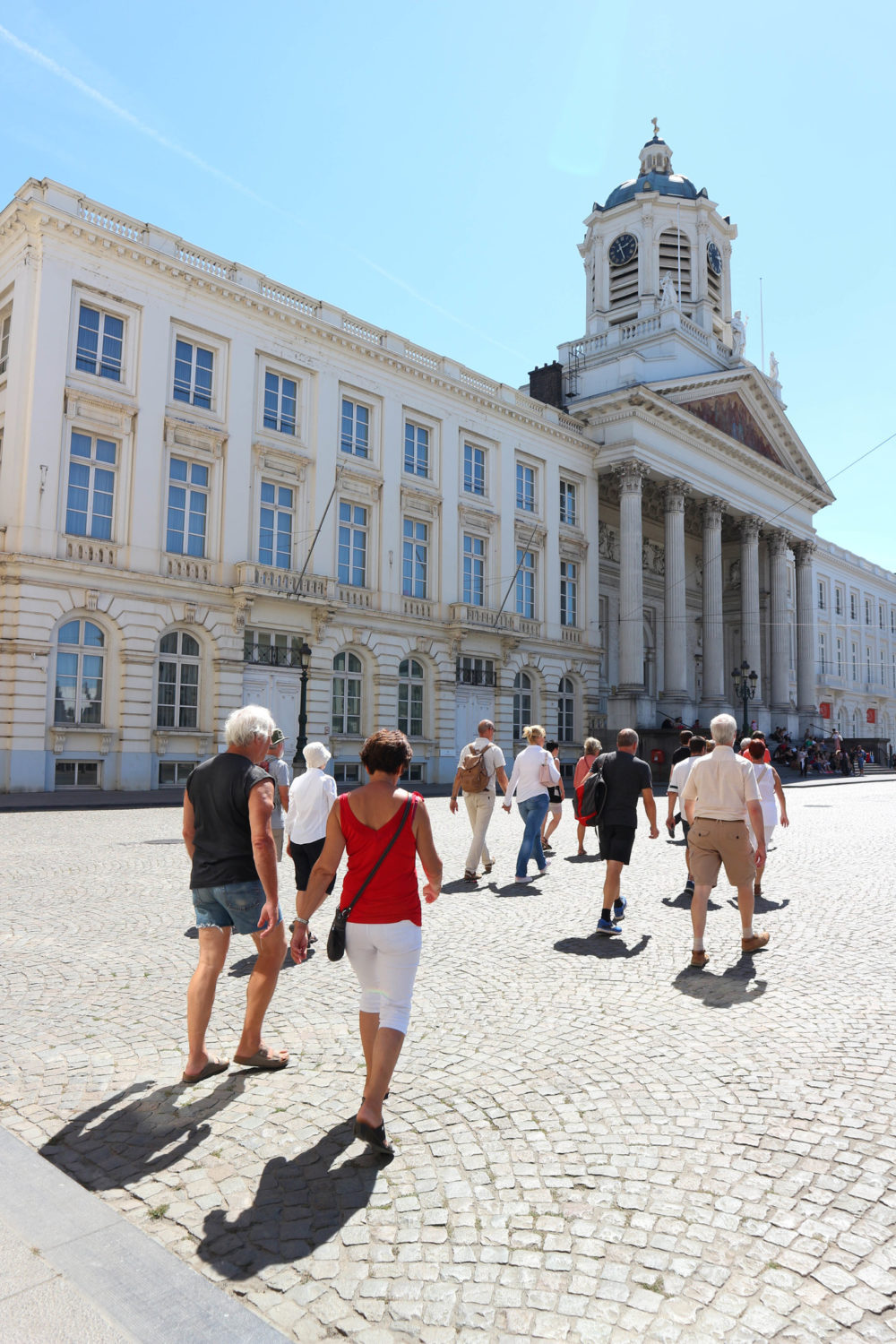
Guided tours for individuals
Don’t wait a moment longer to explore the next guided tours of the season! Our programme includes: guided tours about the history and architectural heritage of Brussels, guided tours of districts which end by meeting people who live there, and our new “City in transformation” tours which explore current projects that are in the news and that raise new questions in the debate about urban development.
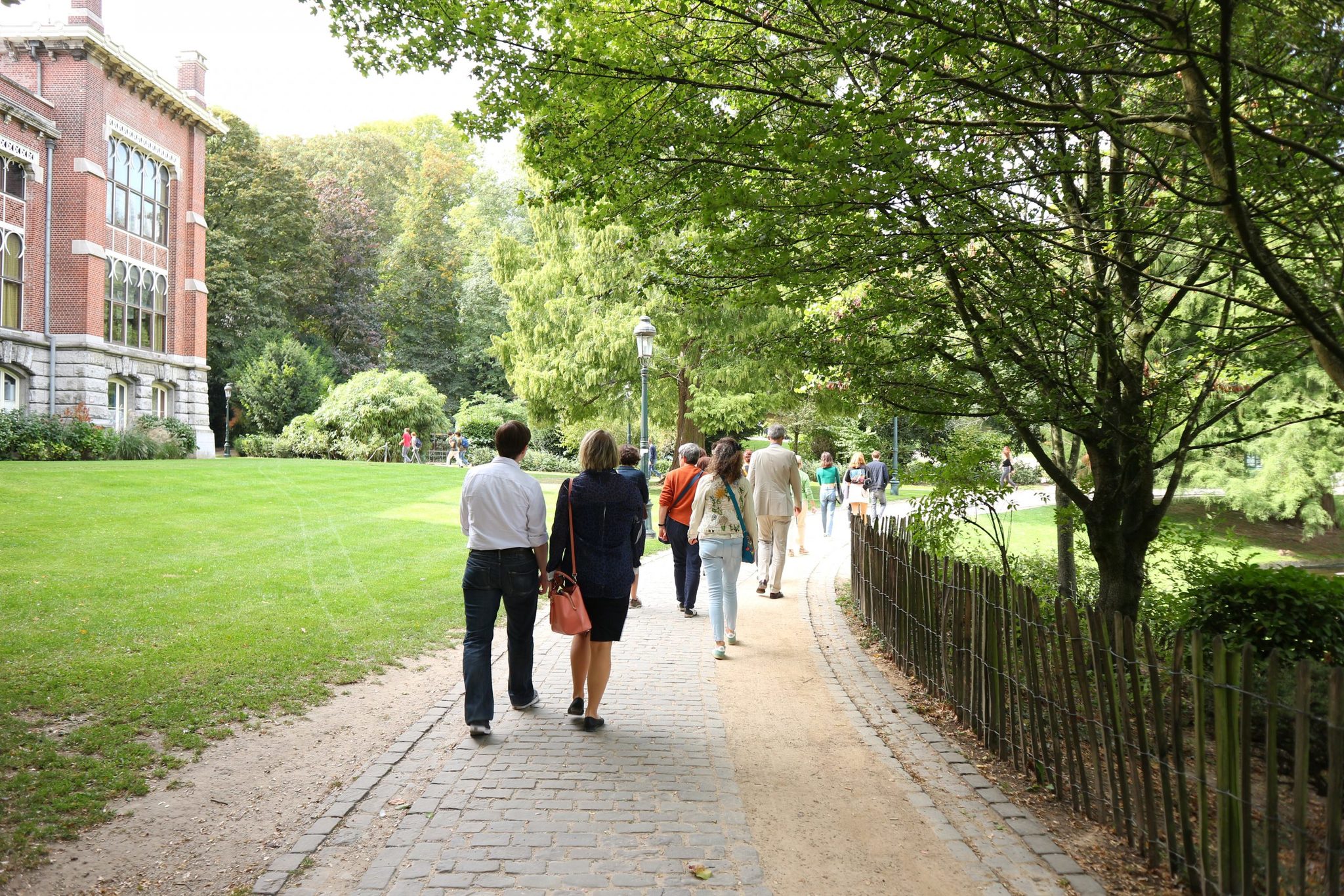
Guided tours for groups
Would you like to follow a guided tour of Brussels with your family, friends, or as part of a team building or a school outing?
ARAU can arrange guided tours for groups in addition to its public programme throughout the year. You can tailor these tours to your specific requirements regarding date, time, duration and language (French, English, Dutch, German, Spanish or Italian).
Brussels: Fall and Rise of Art-Nouveau Guided Tour
Is it possible that the streets of Brussels hold the secrets to the rise and fall of Art-Nouveau architecture?
Unveil the mysteries of this captivating art movement through a guided tour that promises to take you on a journey through time and creativity.
Discover how this unique style transformed the cityscape and influenced generations of artists and architects.
Stay tuned to unravel the hidden gems waiting to be explored in the heart of Brussels.
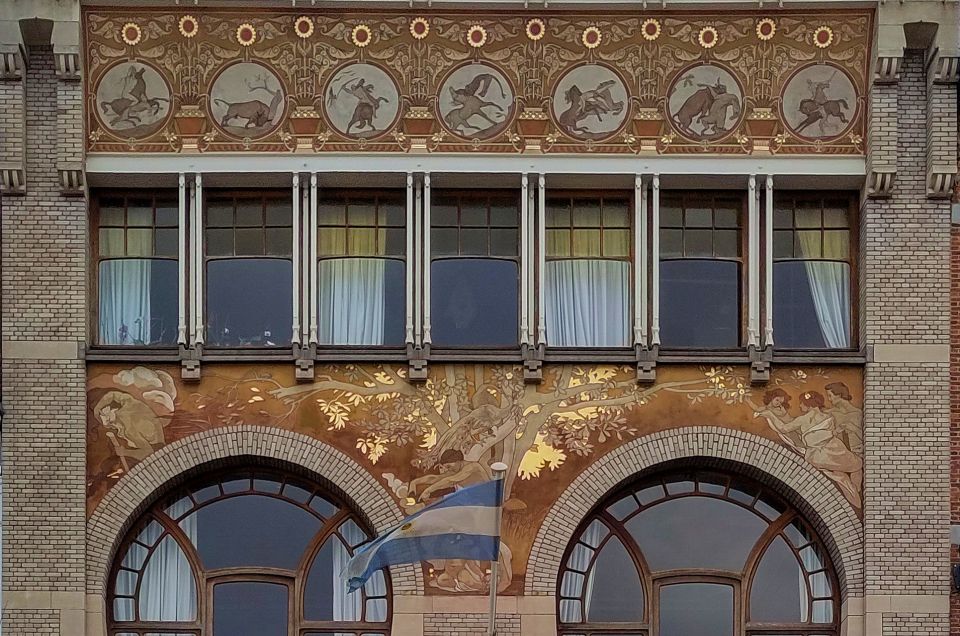
- Explore the intricate sgraffito technique and its significance in Art Nouveau.
- Gain insight into the architectural innovation and evolution in Brussels.
- Explore the history and beauty of Art Nouveau through guided exploration.
- Appreciate the vibrant legacy of Art Nouveau in Brussels with expert guidance.
Here's some more nearby activities we've reviewed
- From Amsterdam: To Brussels – Private Driver – Luxury Car
- Brussels: The World of Banksy Museum Permanent Exhibition
- Brussels: Guided Walking Tour
- From Brussels: Bruges Full-Day Guided Tour
Tour Activity Details

Discover the essential details of the Brussels Art-Nouveau guided tour for an insightful exploration of the city’s architectural gems and historical significance .
Participants will explore Art Nouveau techniques and witness architectural innovation firsthand. The tour offers a comprehensive understanding of the sgraffito technique, distinguishing it from traditional frescoes.
With a focus on historical remains like Victor Horta’s Maison du Peuple, visitors will be captivated by the evolution of architectural styles. Saint-Gilles and Ixelles showcase houses by pioneering late nineteenth-century architects, highlighting the roots of Art Nouveau.
Experience Highlights
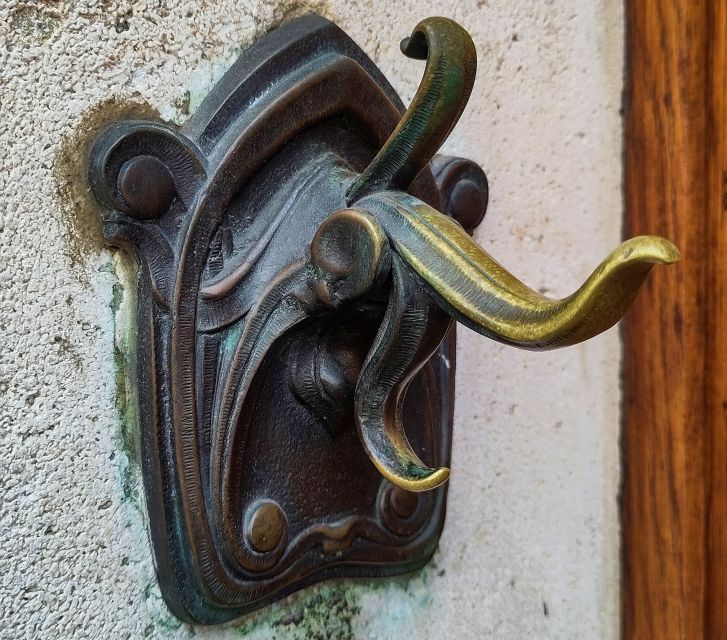
Enjoy the intricate world of Art-Nouveau techniques and architectural marvels on the guided tour through Brussels. The experience highlights include learning about Art-Nouveau techniques and delving into the sgraffito technique, distinguishing it from frescoes. Participants will have the opportunity to explore the historical remains of Victor Hortas Maison du Peuple, a significant architectural innovation of its time. Plus, they can admire the beautiful streets of the Belgian capital while following the guide around Brussels’ outskirts to see charming streets. This guided tour offers a unique insight into the Art Nouveau movement, showcasing its techniques and architectural innovation.
Full Tour Description
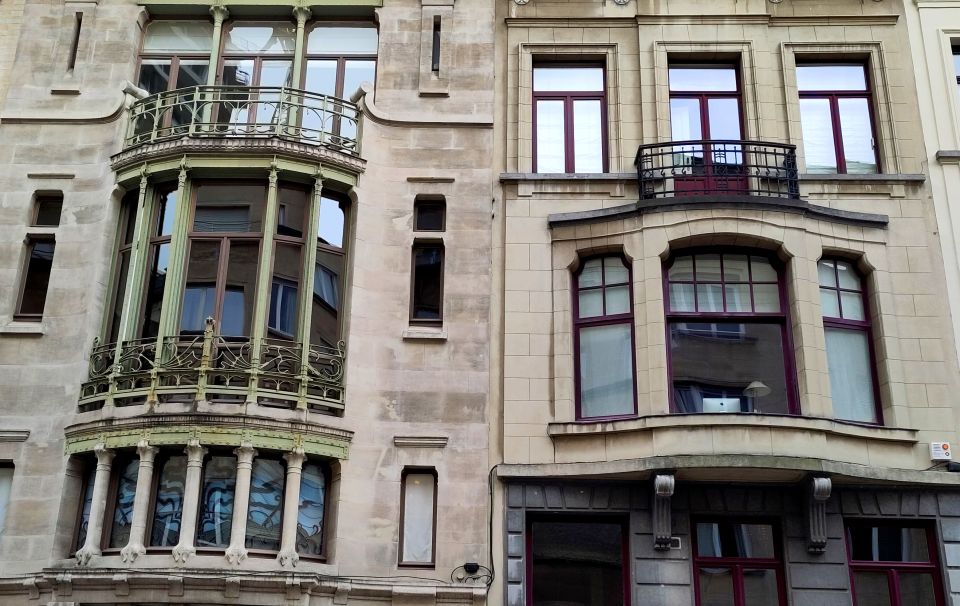
The Brussels Art-Nouveau guided tour showcases the vibrant architectural legacy of the city, offering a captivating exploration of its 19 communes with stable Art-Nouveau architecture.
Saint-Gilles and Ixelles boast houses designed by innovative late nineteenth-century architects, providing a glimpse into the history of Art Nouveau.
Participants will discover the first house of Art-Nouveau, delving into the intricate sgraffito technique that distinguishes it from traditional frescoes.
The tour includes a visit to Victor Horta’s Maison du Peuple, a significant architectural gem embodying the evolution of Art Nouveau.
As visitors traverse a three-kilometer route through Brussels’ outskirts, they’ll witness the architectural evolution that has shaped the beautiful streets of the Belgian capital.
As the exploration continues through the vibrant architectural legacy of Brussels, the guided tour ensures participants are provided with a comprehensive experience that includes a guided walking tour and additional audiovisual information for added depth.
Participants explore Art Nouveau techniques during the tour.
The exploration includes uncovering historical remains of significant buildings.
Engage in a sgraffito exploration, understanding its nuances compared to frescoes.
Admire the beautiful streets of Brussels, immersing in the city’s charm and architectural wonders.
Selecting Participants and Date
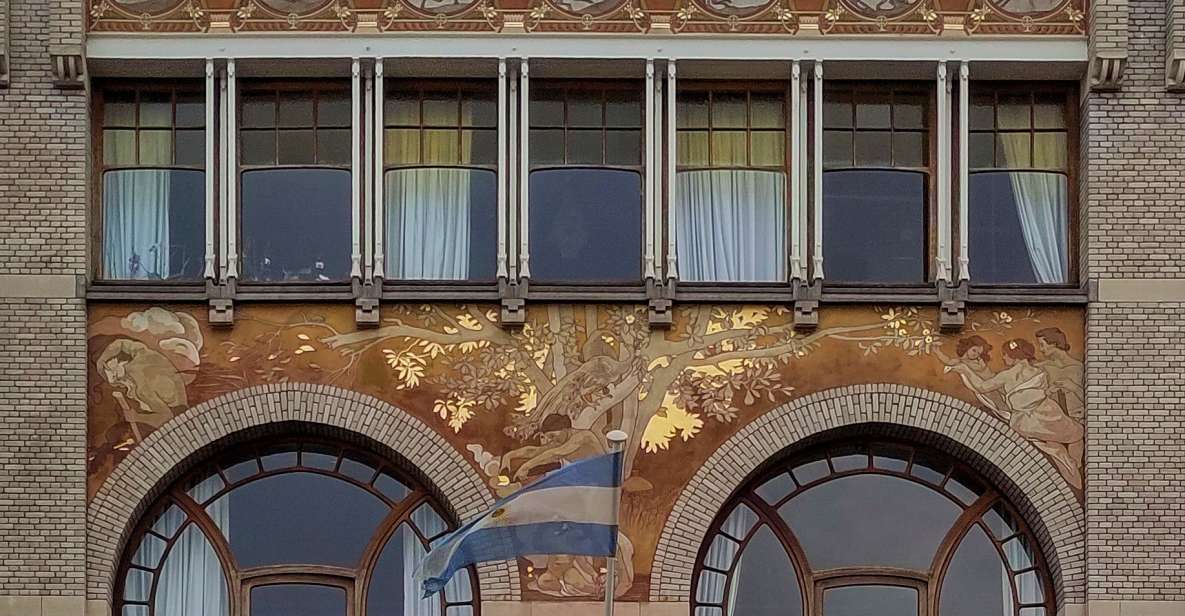
Participants in the Brussels Art-Nouveau Guided Tour can meet the guide at the designated Horta Metro station, located near number 187 on Chaussée de Waterlo, for an enriching exploration of the city’s architectural heritage. This experience offers a unique opportunity to explore the historical significance of Art-Nouveau architecture in Brussels.
By joining the tour, participants can expect to learn about the innovative techniques used by late nineteenth-century architects, explore the sgraffito technique, and visit notable sites like Victor Horta’s Maison du Peuple. To ensure a memorable and informative journey through the city’s architectural gems, participants should review mentions of the guide, Samuel , known for providing clear explanations of Art Nouveau concepts.
Don’t miss the chance to learn about the beauty and history of Brussels’ art-nouveau scene.
Meeting Point Directions
Upon arriving at the designated Horta Metro station near number 187 on Chaussée de Waterlo, visitors will easily spot the guide wearing a Curiositas Mundus badge to begin their immersive Brussels Art-Nouveau Guided Tour experience. The meeting point is conveniently located near several landmarks, enhancing the overall experience:
- Look for the iconic Horta Museum nearby.
- Enjoy the picturesque surroundings of Parc de Forest just a short walk away.
- Admire the stunning architecture of Maison Saint-Cyr.
- Take a moment to appreciate the historical significance of the nearby Maison du Peuple.
These landmarks not only provide a visually appealing backdrop but also serve as reference points for visitors exploring the Art-Nouveau wonders of Brussels.
Additional Tour Information
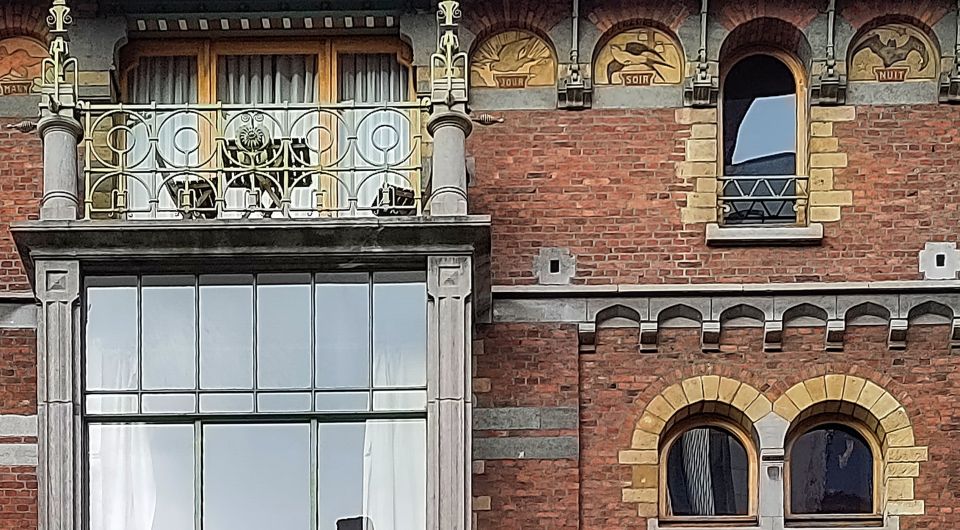
Visitors embarking on the Brussels Art-Nouveau Guided Tour can anticipate an enriching experience filled with insights into the intricate world of Art-Nouveau architecture and techniques. The tour offers a deep dive into exploration techniques , allowing participants to grasp the architectural evolution that characterizes this unique style.
They’ll learn about Art-Nouveau techniques, including the distinct sgraffito technique and its differences from frescoes. The historical remains of Victor Hortas Maison du Peuple will be explored, providing a glimpse into the roots of Art-Nouveau.
Plus, you will have the opportunity to admire the beautiful streets of the Belgian capital and follow the guide around Brussels’ outskirts to see charming streets, enhancing their understanding of this captivating architectural movement.
Here's a few more nearby tours and experiences we have reviewed.
- 2-Hour Brussels Guided Walking Tour
- From Brussels: Day Trip to Amsterdam
- Brussels 2.5-Hour Belgian Beer Tasting Experience
- Brussels: LEGO Discovery Centre Admission Ticket
- From Brussels: Ghent and Bruges Day Tour
- Brussels: Highlights Self-Guided Scavenger Hunt and Tour
Common questions
Are there any specific requirements or recommendations for clothing or footwear for the tour.
In preparing for the tour, consider the weather for comfort. Shoe comfort is essential due to the 2.5-hour duration. Wheelchair accessibility is available. Dress code restrictions are not mentioned, but comfortable attire is recommended.
Can Participants Take Photographs During the Tour?
Participants can take photographs during the tour to capture memorable moments. However, they should be mindful of photography etiquette to respect privacy concerns and maintain good group dynamics . This will enhance the overall tour experience for everyone involved.
Is There a Restroom Available Along the Route of the Tour?
Restroom availability along the tour route is limited. Participants are advised to use facilities before starting. While no specific meal recommendations are provided, exploring local artisans ‘ offerings can be a delightful way to experience the tour.
Are There Any Opportunities for Participants to Interact With Local Residents or Artisans During the Tour?
During the tour, participants can engage in local interactions with residents and visit artisan workshops . They will have the opportunity to learn about the artistic heritage of Brussels firsthand from those who live and work in the city.
Is There a Recommended Local Spot for Participants to Grab a Meal or Snack After the Tour Concludes?
After the tour, participants can indulge in local cuisine at Chez Léon, known for its delicious mussels. This iconic spot offers a taste of Belgian gastronomy. Dining recommendations include trying their authentic Belgian waffles for a sweet treat.
Here's more of our most recent tour reviews happening neaby
- Excursion to Antwerp and Ghent by Bus From Brussels With Stop at the Atomium
- Standard Minivan From Charleroi Airport to City of Antwerp
- Brussels Shuttle Transfer – SPA (1 to 8 PLACES)
- Try Find Your Better Than Us ! Airport Transfer Service in Brussels Htl-Apt(Bru)
- Private Transfer From Brussels – Amsterdam MB E-Class 3 PAX
- Private Transfer From Brussels to Frankfurt With Luxury Car
- Touristic Highlights of Brussels on a Half Day (4 Hours) Private Tour
- Transfer From Brussels – Paris Center MB V-Class 7 PAX
- Belgian Chocolate Making Class and Tasting in Brussels
- Full-Day City Tour of Ghent and Bruges From Brussels
- Beer Tasting Experience in Brussels
Join the ‘Brussels: Fall and Rise of Art-Nouveau Guided Tour’ for a captivating exploration of the city’s architectural treasures. Uncover the secrets of Art-Nouveau techniques, admire stunning landmarks , and learn about the rich history of this artistic movement.
With knowledgeable guides and flexible booking options, this tour promises an unforgettable experience for art enthusiasts and history buffs alike. Don’t miss out on this opportunity to discover the beauty of Brussels’ Art-Nouveau heritage.
Similar Posts
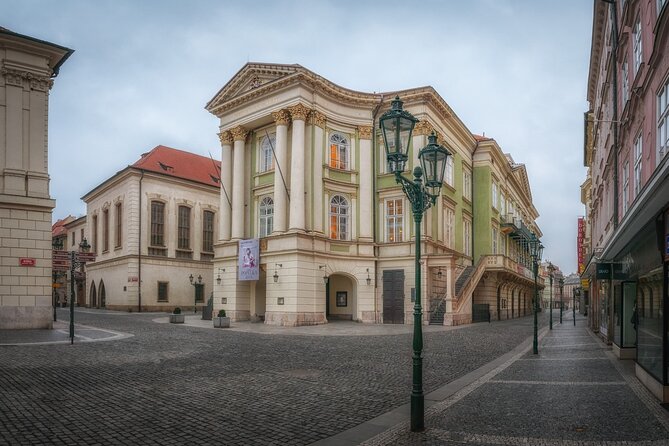
2 Hours Guided Prague Behind The Iron Curtain Communism Tour
Step back in time as you walk the streets of Prague, shrouded in remnants of its communist past. Guided by…

Canyoning Experience in Ribeira Dos Caldeiroes
As the rushing waters of Ribeira Dos Caldeiroes carve their path through the rugged canyons, embarking on a canyoning adventure…

Punta Cana: Los Haitises Hike & Kayaking Mangroves
While some may hesitate due to concerns about physical exertion, the ‘Punta Cana: Los Haitises Hike & Kayaking Mangroves’ offers…

Cañon De Los Perdidos Exploration – Lima Departure
As the sun rose over the rugged cliffs of Cañon De Los Perdidos, casting a golden hue over the ancient…
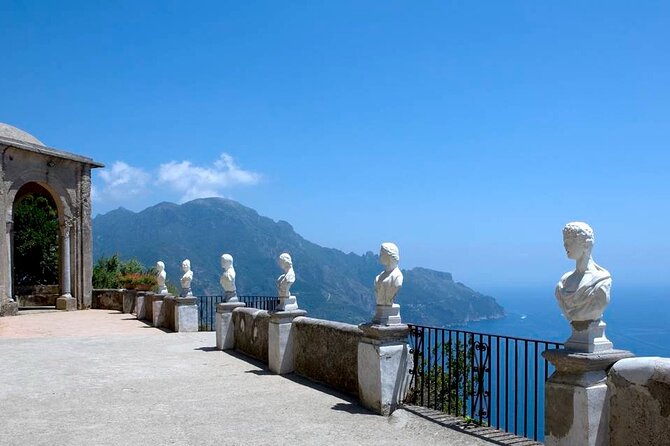
Private Day Tour of Positano, Amalfi and Ravello From Naples
Set out on a journey through the enchanting Amalfi Coast with a Private Day Tour of Positano, Amalfi, and Ravello…
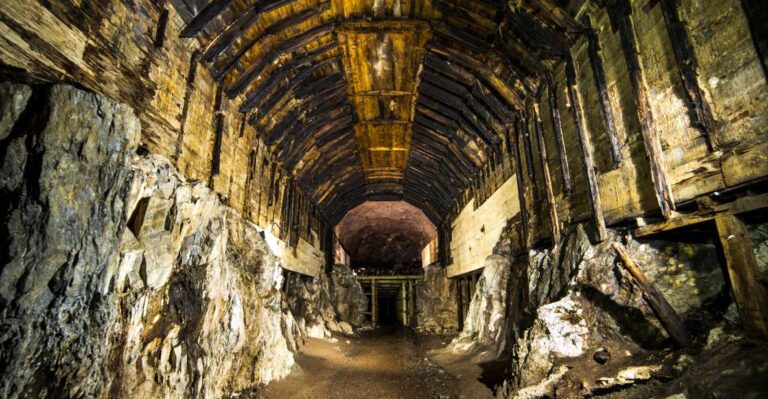
Wroclaw: WW2 Tour to Project Riese & Gross-Rosen Museum
While some may find the idea of visiting historical sites from World War II unsettling, exploring Wroclaw’s WW2 Tour to…
- Art Nouveau Deco A Walking...
Art Nouveau & Deco: A Walking Tour Of Saint-Gilles, Brussels

Brussels is one of the greatest (and most overlooked) areas in which to appreciate Art Nouveau and Deco buildings. In Saint-Gilles , one of the most eclectic municipalities of the city, you will find a great concentration of architectural masterpieces. Head south of the historic center to the top Art Nouveau and Deco sights in Saint-Gilles.

1. Musée Victor Horta
Musée victor horta.
Affectionately named ‘ the father of Art Nouveau in Brussels ,’ Victor Horta is one of the Art Nouveau movement’s main architects. It’s no wonder, then, why a visit to his home-turned-museum would be the ideal starting point for a relaxed walking tour focusing on this fil rouge . Observe how this innovative space was developed with extreme attention to detail. From the ground floor to the attic, this building offers a better understanding of the Art Nouveau movement in Brussels.
Opening Hours: Tuesday to Sunday, 2pm-5:30pm
Musée Victor Horta, Rue Américaine 22, 1060 Brussels, Belgium +32 2 543 04 09

Hotel Hannon – detail | © Camilla Colavolpe
2. Hotel Hannon
Museum, Memorial

3. Horta Premetro Station
Horta premetro station.
North, towards Port de Hal, there is an out-of-the-ordinary Art Nouveau example, but this time it is underground. Maybe the frequent or occasional public transport riders would have already noticed it, but the Horta Premetro Station hides surprising examples of Art Nouveau. At this particular metro station, you will find stained-glass windows of the Hôtel Aubecq and balustrades from Maison du Peuple (demolished in 1965), incredible remnants to see — just tilt your head up.
Horta Premetro Station, Chaussée de Waterloo, 1060 Brussels, Belgium

Piscine Victor Boin from the outside | © Camilla Colavolpe
4. Piscine Victor Boin
Piscine victor boin.
Art Nouveau and Deco architecture is impressive due to the variety of forms and functions they take. This is particularly true in Saint-Gilles, where an entire public swimming pool launched in 1905 was completely remodeled in Art Deco style between 1938 – 1940. This spacious building also hosts a cafeteria which faces the swimming pool, creating an unexpected spot to take a refreshing break.
Opening Hours: Mon/Tue/Thu/Fri, 8am – 7pm | Wed, 2pm – 7pm | Sat, 9am – 12pm & 1pm – 6pm
Piscine Communale Victor Boin, rue de la Perche 38, 1060 Brussels, Belgium +32 2 539 06 15

Rue Vanderschrick | © Camilla Colavolpe
5. Rue Vanderschrick
Rue vanderschrick.
A few minutes from the Barriére area and its beautiful sights sits one of the rarest Art Nouveau ensembles architecturaux — 14 buildings which date back to the beginning of the 20th century (1900-1902) and were partially renovated in 2004, with different façades and bundles of used materials, signed by le maître de l’unité dans la diversité : Ernest Blérot. Of course, you will find other examples of these Art Nouveau conglomerates signed by the same master in other areas, but only in rue Vanderschrick will you find such a high concentration of buildings that are still well preserved. Although the richness and decorative element on each façade, each distinct home matches in a harmonious way. Experience a walk within this fin de siècle atmosphere!
Ensemble (or Séquence) Blérot, Rue Vandershrick 1 a 13, 15 to 25, 1060 Brussels, Belgium

Brasserie Verschueren | © Camilla Colavolpe
6. Brasserie Verschueren
Brasserie, Belgian

7. Maison Hoguet
Maison hoguet.
Maison Hoguet, situated on rue de Rome 24-28, is another clear example of Art Deco architecture, designed by Jean Ligo. Formerly tailoring atelier workplaces and Hoguet family’s home back in 1928, in 1970 the building was left to the Commune de Saint-Gilles under the condition it would be used for cultural purposes. From tailoring atelier to Académie de Musique, Maison Hoguet is currently the hosting space of La Maison du Livre , an association and bibliotheque , celebrating the passion of the Saint-Gilloises for the lecture publique.
Maison Hoguet, Rue de Rome 24-28, 1060 Brussels, Belgium

Ciamberlani House | © Anton Raath / Flickr
8. Rue Defacqz
Rue defacqz.
As the ideal way to finish this tour, take a peek at one of the houses down rue Defacqz, close to Avenue Louise . Although half is in Saint-Gilles and the other in the municipality of Ixelles , this street offers numerous examples of the Art Nouveau movement in Brussels by the great architect Paul Hankar. In Ixelles, number 48, you will find La Maison Ciamberlani (1897) built at the request of painter Ciamberlani, and number 50, the Hôtel Janssens . On the Saint-Gilles side, you may admire the Maison Hankar and its astonishing sgraffitis at house number 71. This street is definitely a fantastic place to admire the intricacy and sinuosity of the lines and the pure expression of whims and fantasy signed by and Art Nouveau master.
Maison Hankar, rue Defacqz 71, 1060 Brussels, Belgium By Camilla Colavolpe
Since you are here, we would like to share our vision for the future of travel - and the direction Culture Trip is moving in.
Culture Trip launched in 2011 with a simple yet passionate mission: to inspire people to go beyond their boundaries and experience what makes a place, its people and its culture special and meaningful — and this is still in our DNA today. We are proud that, for more than a decade, millions like you have trusted our award-winning recommendations by people who deeply understand what makes certain places and communities so special.
Increasingly we believe the world needs more meaningful, real-life connections between curious travellers keen to explore the world in a more responsible way. That is why we have intensively curated a collection of premium small-group trips as an invitation to meet and connect with new, like-minded people for once-in-a-lifetime experiences in three categories: Culture Trips, Rail Trips and Private Trips. Our Trips are suitable for both solo travelers, couples and friends who want to explore the world together.
Culture Trips are deeply immersive 5 to 16 days itineraries, that combine authentic local experiences, exciting activities and 4-5* accommodation to look forward to at the end of each day. Our Rail Trips are our most planet-friendly itineraries that invite you to take the scenic route, relax whilst getting under the skin of a destination. Our Private Trips are fully tailored itineraries, curated by our Travel Experts specifically for you, your friends or your family.
We know that many of you worry about the environmental impact of travel and are looking for ways of expanding horizons in ways that do minimal harm - and may even bring benefits. We are committed to go as far as possible in curating our trips with care for the planet. That is why all of our trips are flightless in destination, fully carbon offset - and we have ambitious plans to be net zero in the very near future.

Restaurants
The 10 best restaurants in brussels.

What's On
Why are people stealing bees in belgium and the netherlands.

See & Do
10 free things to do in antwerp, belgium.

Places to Stay
The best cheap hotels to book in belgium.

The Flemish Masters Every Art Lover Should Know

Guides & Tips
11 beautiful words to make you fall in love with the flemish language.

10 Awesome Free Things to Do in Brussels

Discover the Best Belgian Photography in Antwerp this Summer

How to Celebrate the Legacy of Peter Paul Rubens in Antwerp

How to Spend a Weekend in Han-sur-Lesse, Belgium

A New Exhibition In Brussels Explores Disability Through New Technology and Historic Artifacts


Ostend is Converting an Abandoned Hangar into a 'Mega Brothel'
Culture trip spring sale, save up to $1,100 on our unique small-group trips limited spots..

- Post ID: 579128
- Sponsored? No
- View Payload
archiweek u .
Architectural days.
10 19 november 2023
archiweek opens the doors to contemporary architecture in the Brussels Region
From 10 until 19 november 2023, Urban will organise guided tours in contemporary buildings, open days at architecture offices, seminars, workshops, conferences and exhibitions in the Brussels Capital Region. All these events will be free and open to all.
For its 5th edition in 2023, archiweek is opening the doors to projects nominated by the Brussels Architecture Prize jury. This will allow the public to follow in the footsteps of jury members, visit gems throughout the city and decide which project earns their vote for the People's Choice Award to be presented on 12 December 2023. Find out more about the Brussels Architecture Prize
More information
Call for projects for the 2024 archiweek curator
This call for candidates invites architects, urban planners, designers, researchers, critics or artists to apply for the role of curator of the archiweek 2024. Does this challenge speak to you? Then Urban invites you to submit your offer no later than Monday 25 March 2024 at 12:00 noon.
- Project nominated for the Brussels Architecture Prize
- Sustainable Architecture
- New in town
- Agency visit

History Daily
Architectural Wonders: 20 World's Fair Buildings That Stand the Test of Time
Posted: April 27, 2024 | Last updated: April 27, 2024
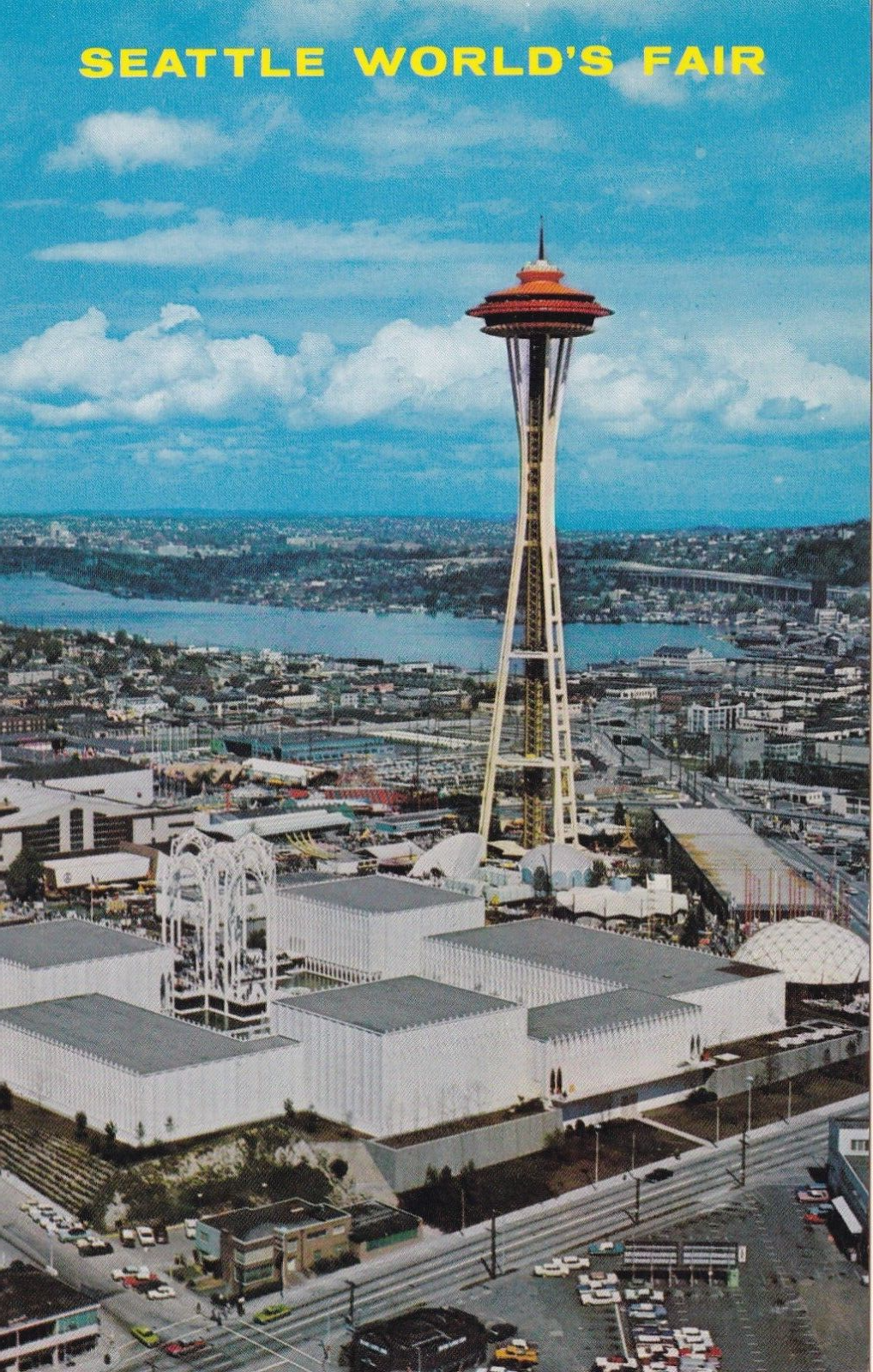
Seattle's Famous Observation Tower: The Space Needle
These architectural marvels are not just landmarks but reflections of the host country's cultural identity. From grand pavilions to futuristic structures, each building tells a unique story through its size, shape, and architectural style. Step into a world of exhibitions, performances, and conferences that once graced these buildings during the fairs, drawing visitors from far and wide. Discover the fascinating journey of these buildings post-fair, as some find new purposes, others become historical landmarks, and a few even embark on journeys to new destinations. Join us as we explore 20 world's fair buildings that continue to captivate and inspire audiences today!
The Space Needle was designed by architect John Graham and built for the 1962 Seattle World's Fair, also known as the Century 21 Exposition. This futuristic tower was designed to represent innovation and progress, reflecting the Space Age optimism at the time.
At 605 feet, the Space Needle quickly became the centerpiece of the Seattle World's Fair, offering visitors breathtaking views of the city and the surrounding Puget Sound region from its observation deck. Its unique saucer-shaped design was inspired by the idea of a flying saucer.
After the fair, the Space Needle continued to attract visitors from around the world. Today, the building welcomes over a million visitors annually. You can ride its elevators to the observation deck to enjoy panoramic vistas of the city, dine in the revolving restaurant, and experience the glass-floored observation deck.
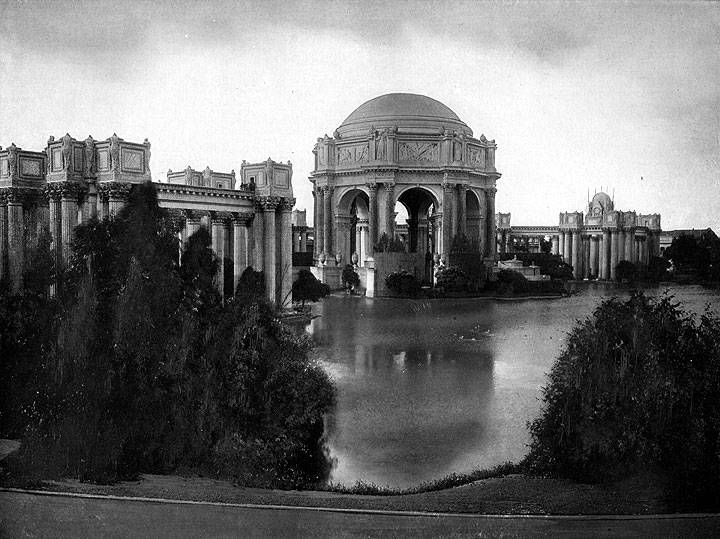
An Art Nouveau Masterpiece: The Palace of Fine Arts in San Francisco
The Palace of Fine Arts in San Francisco was designed by architect Bernard Maybeck. Built for the 1915 Panama-Pacific International Exposition (PPIE), it was supposed to be a temporary structure to showcase art and culture from around the world.
The Palace of Fine Arts was the focal point for the PPIE, a world's fair commemorating the completion of the Panama Canal and celebrating San Francisco's recovery from the devastating 1906 earthquake. Its Greco-Roman design, complete with colonnades, rotundas, and a lagoon, provided a beautiful setting for exhibitions, performances, and cultural events during the fair.
Despite being intended as a temporary exhibition space, the city decided to keep the Palace of Fine Arts due to its popularity. After the fair ended, the building and its environs were restored. Today, it is a landmark in San Francisco's Marina District, attracting over a million visitors annually.
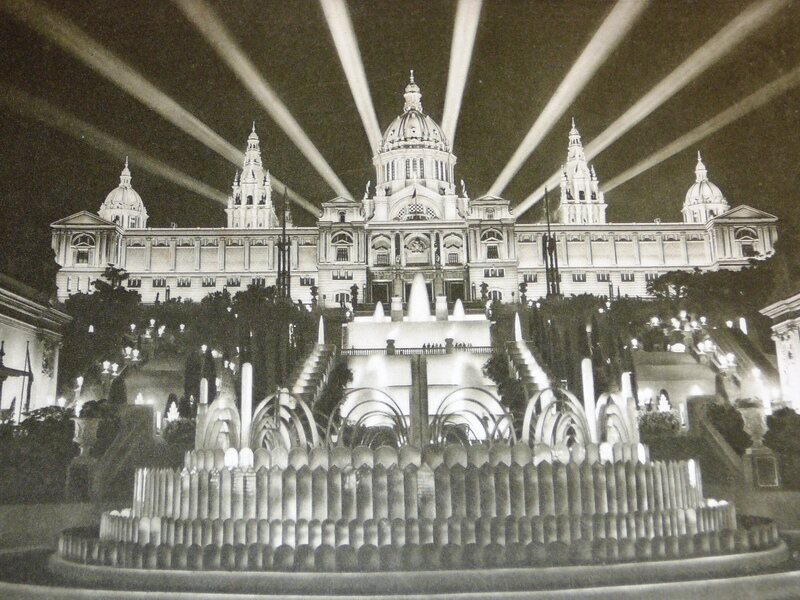
A Palace on Top of a Hill: The Montjuïc National Palace in Barcelona
The Montjuïc National Palace was built for the 1929 International Exposition, also known as the Barcelona International Exposition. Designed by architects Eugenio Cendoya and Enric Catà, it was built on top of the Montjuïc hill overlooking Barcelona, Spain. The primary purpose of the Montjuïc National Palace was as the main pavilion for the exposition, showcasing Spain's cultural heritage and technological advancements. The neoclassical design featured columns, ornate façades, and large courtyards.
During the 1929 International Exposition, the palace held exhibitions, conferences, and cultural events. Today, the Montjuïc National Palace continues to be a prominent landmark in Barcelona, attracting countless visitors who come to admire its architecture and explore the surrounding Montjuïc Park. The palace also houses the National Art Museum of Catalonia (MNAC), which exhibits an extensive collection of Catalan art spanning from the Romanesque period to the present day.
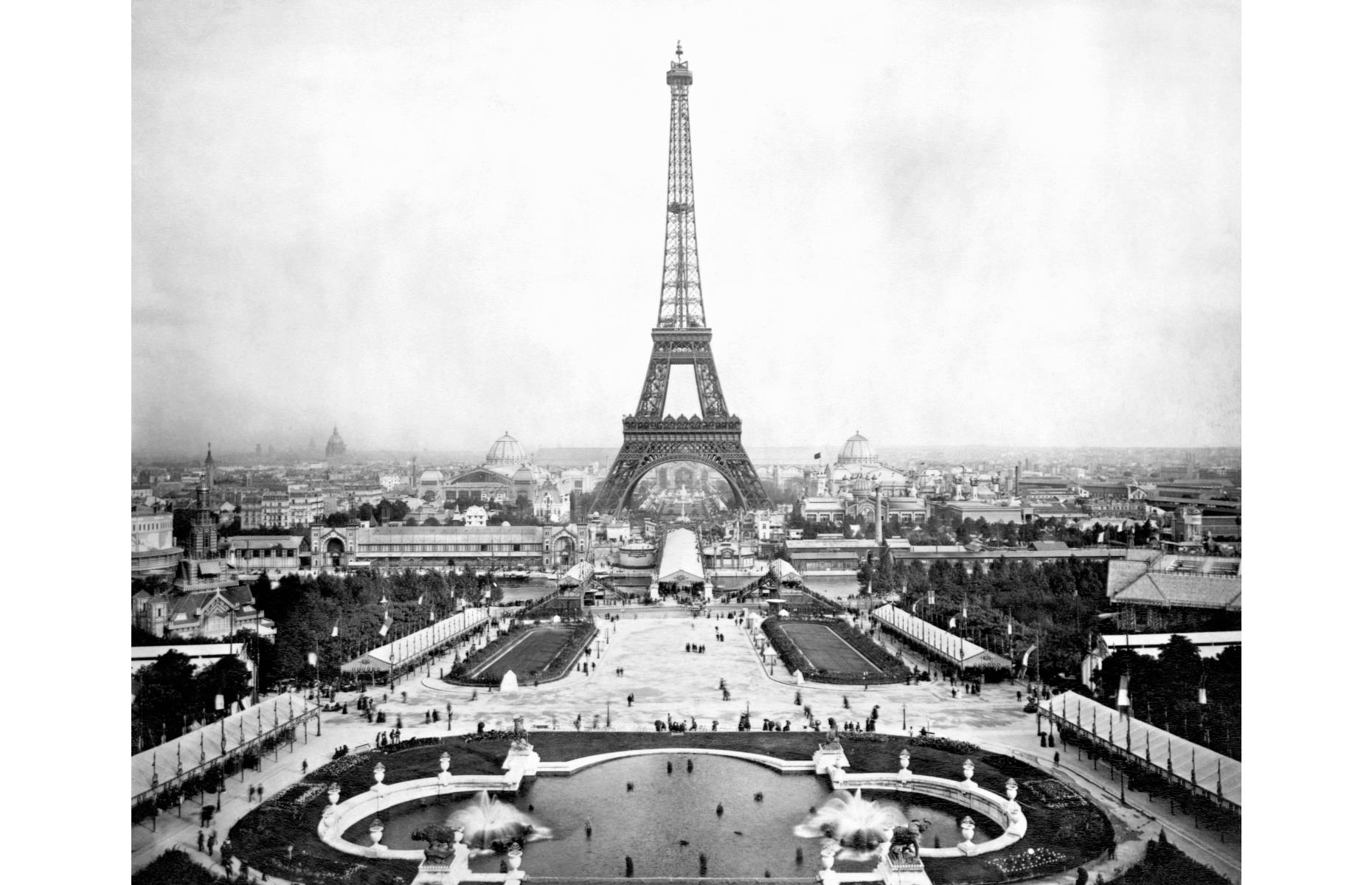
One of the Most Recognizable Structures in the World: The Eiffel Tower
The Eiffel Tower, an iconic symbol of the city of Paris and one of the world's most recognizable landmarks, was designed by French engineer Gustave Eiffel. Completed in 1889, it was built as the centerpiece of the 1889 Exposition Universelle held in Paris to commemorate the 100th anniversary of the French Revolution. At a height of 1,063 feet, the Eiffel Tower was initially met with skepticism and criticism, but it soon became a beloved landmark.
Today, the Eiffel Tower continues to attract millions of visitors annually, making it one of the most visited paid monuments in the world. Besides being a world's fair building, it now signifies something much greater: romance, adventure, and French culture. Tourists flock to the Eiffel Tower to go up its elevators and staircases, capturing photographs of the structure itself as well as the views it offers.
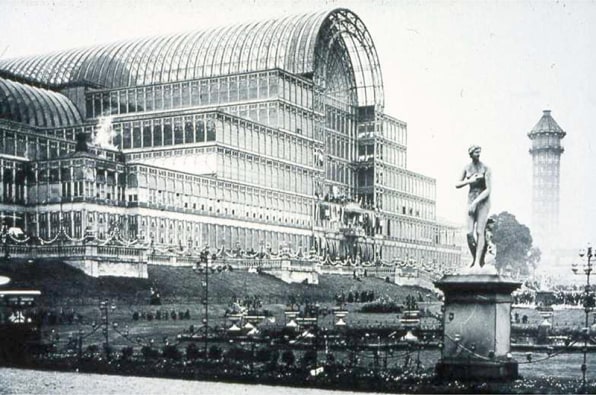
A Landmark No More: The Crystal Palace in London
The Crystal Palace was designed by Sir Joseph Paxton, an English gardener and architect. Situated in London's Hyde Park, it was completed in 1851 to house the Great Exhibition, the world's first international exposition of industry, culture, and innovation.
Built primarily of iron and glass, the Crystal Palace was intended to symbolize the advancements of the Industrial Revolution. Its interior space accommodated thousands of exhibits from around the world, ranging from machinery and technology to art and artifacts, attracting millions of visitors during the Great Exhibition.
While the original Crystal Palace was destroyed by a fire in 1936, its legacy lives on. Today, the site of the Crystal Palace hosts various events, including exhibitions, concerts, and sporting competitions, attracting many visitors to the Hyde Park area every year.
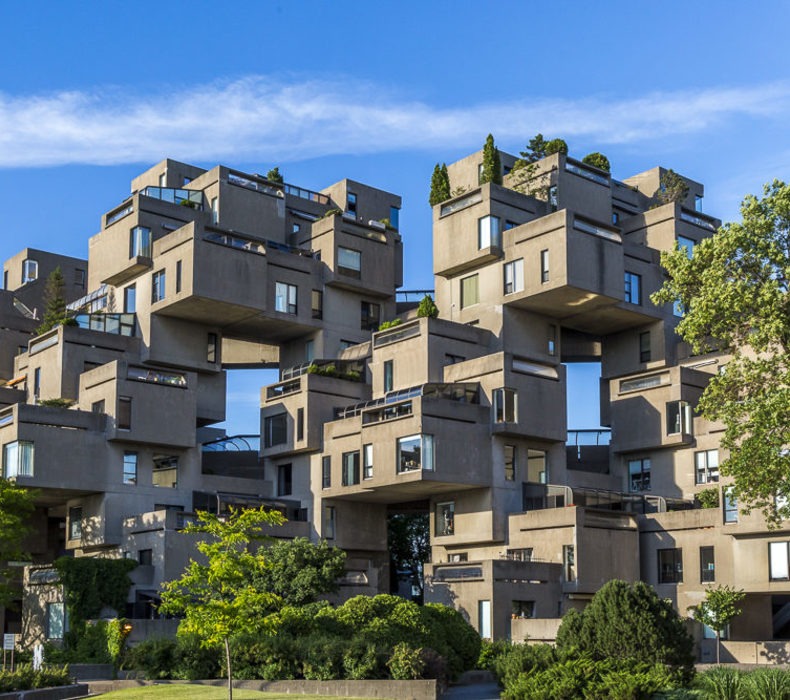
A Residential Experiment: Habitat 67 in Montreal
Designed by architect Moshe Safdie, Habitat 67 in Montreal was designed as a solution to urban housing challenges, exploring different ideas for affordable, high-density living in urban environments. Safdie's design for Habitat 67 has a series of interconnected concrete modules, forming a unique residential complex. Each module provides residents with spacious living quarters, private balconies, and natural light. During Expo 67, Habitat 67's bold design focused on changing urban housing and experimenting with new ideas, especially with residential architecture.
Today, Habitat 67 still attracts visitors and is an in-demand residential address in Montreal. Public tours started again in 2022, and visitors can sign up for summer tours from July to October 31st.

Peace Through Understanding and the Unisphere in Flushing, Queens
The Unisphere, in Queens, New York City, was designed by American architect Gilmore David Clarke for the 1964-1965 New York World's Fair. At 140 feet tall, this large aluminum and stainless-steel globe symbolized the fair's theme, "Peace Through Understanding." The Unisphere represented a hope for a peaceful future, and the three rings encircling the globe symbolize the orbits of Yuri Gagarin, the first human in space, John Glenn, the first American to orbit the Earth, and Telstar, the first communication satellite.
In 2010, the Unisphere was renovated with a fresh coat of paint. The Unisphere remains a landmark in Flushing Meadows-Corona Park, attracting tourists and locals who come to admire its beauty and learn about its history.
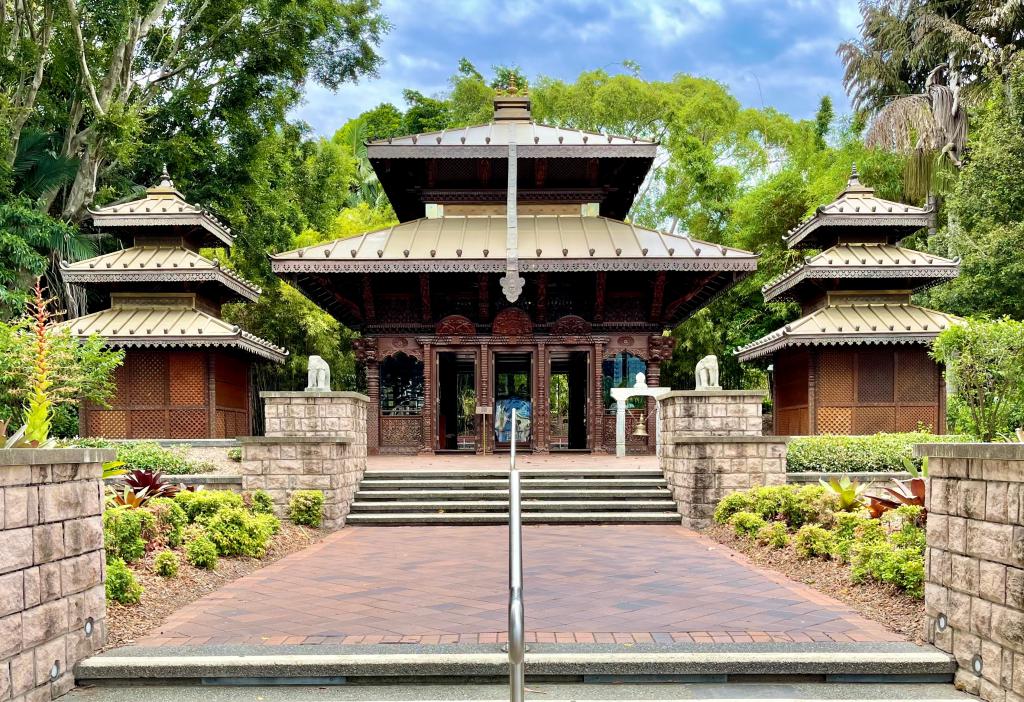
Serenity in the Middle of Urban Chaos: The Nepalese Peace Pagoda in Brisbane
The Nepalese Peace Pagoda in Brisbane City, Australia, was designed by Japanese architect Moktan Yukio. Built in 1988, the Peace Pagoda is a symbol of peace, harmony, and cultural exchange between Nepal and Australia.
The Peace Pagoda was built as part of Brisbane's Expo '88, a world exposition that celebrated Australia's bicentennial and showcased cultural diversity and innovation from around the globe. Representing Nepal's rich cultural heritage, the pagoda was a place of reflection and contemplation during the expo, fostering understanding and goodwill among visitors.
Today, the Nepalese Peace Pagoda attracts visitors looking for tranquility and spiritual solace. Its ornate architecture, adorned with intricate carvings and colorful paintings, offers a glimpse into Nepalese craftsmanship and religious traditions. Set against the backdrop of the Brisbane River and parklands, the Peace Pagoda provides a setting for meditation, cultural events, and community gatherings. The Nepalese Peace Pagoda remains a cherished landmark in Brisbane.

The Futuristic, Modernist Building: The Atomium in Brussels
The Atomium, in Brussels, Belgium, was designed by engineer André Waterkeyn and architects André and Jean Polak. Built for the 1958 Brussels World's Fair (Expo 58), the Atomium represented scientific progress, technological innovation, and the peaceful use of nuclear energy.
The Atomium featured nine interconnected spheres, each measuring 18 meters in diameter. The spheres were supposed to represent an iron crystal magnified 165 billion times. During Expo 58, the Atomium was a central attraction, offering visitors an immersive and educational experience. Its interior offered exhibitions on science, industry, and culture while its observation decks provided panoramic views of Brussels and the surrounding landscape.
Although the Atomium was originally intended as a temporary exhibit, the building still stands and continues to be a major tourist destination, attracting over half a million visitors annually. Visitors can see the exhibitions, including displays on the history of the Atomium and temporary art installations. The Atomium's observation decks are also popular, offering breathtaking views of Brussels.
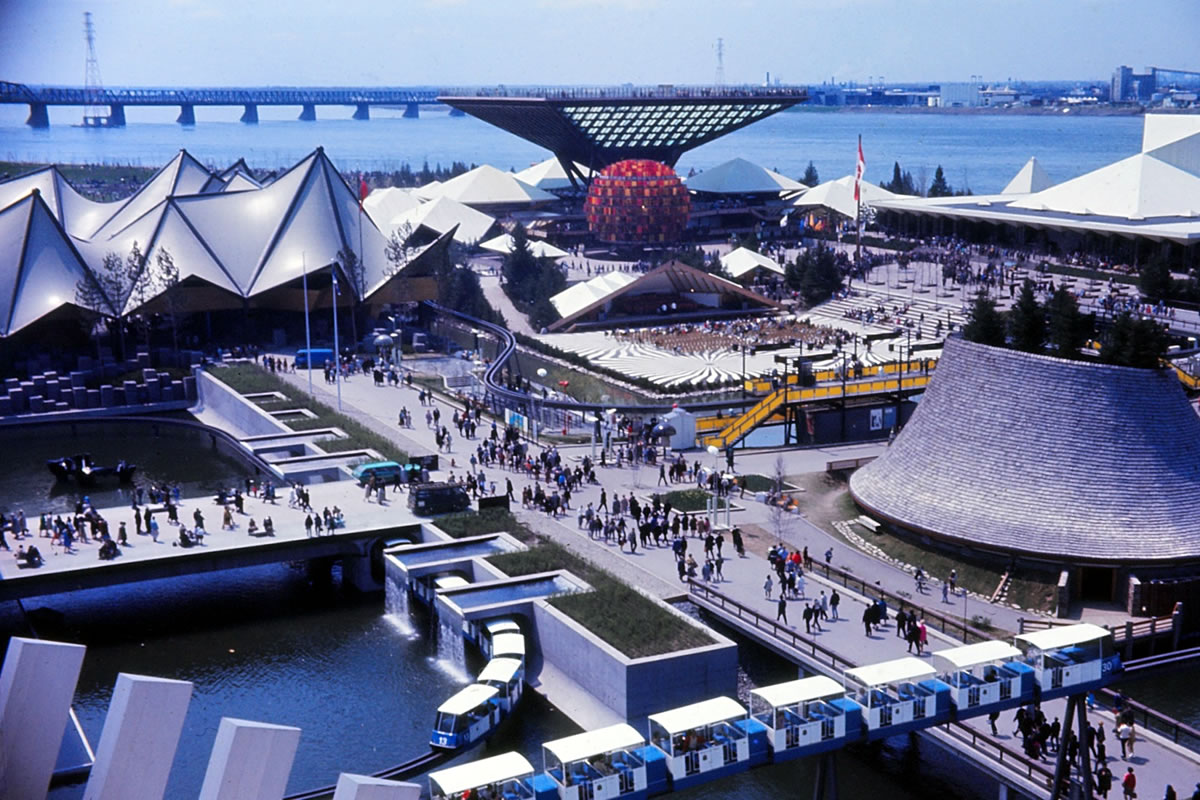
Vancouver's Convention Center: Canada Place
Canada Place, a waterfront landmark in Vancouver, British Columbia, was designed by architect Eberhard Zeidler. Completed in 1986, it was built to serve as the Canadian Pavilion for Expo 86, Vancouver's World Exposition on Transportation and Communication.
The design of Canada Place is inspired by Canada's maritime heritage, with its distinctive roof resembling the sails of a ship. The complex includes the iconic five white sails, a hotel, offices, and retail spaces. Canada Place also features an outdoor promenade and the Canadian Trail, with flags representing each province and territory.
Today, Canada Place is home to the Vancouver Convention Center. It hosts conventions, trade shows, concerts, and cultural events throughout the year. With its waterfront location and panoramic views of the city skyline and mountains, Canada Place welcomes millions of visitors annually.
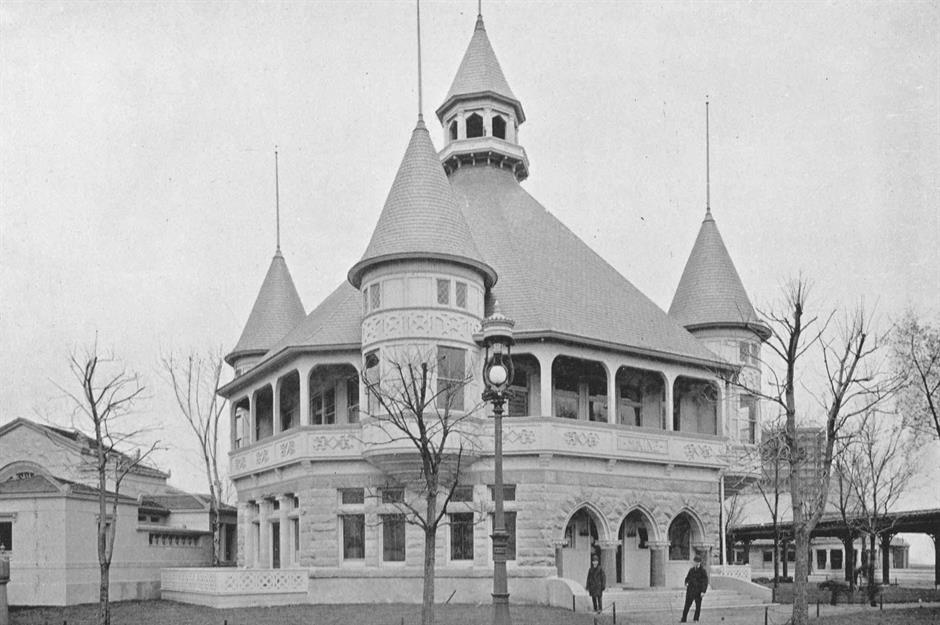
From Chicago to Maine: The Maine State Building
The Maine State Building was designed by Maine architect George Henry Desmond. Built for the 1893 World's Columbian Exposition held in Chicago, the building was designed to showcase Maine's rich cultural heritage, natural resources, and economic opportunities.
The building was constructed to represent Maine's presence at the world's fair, highlighting the state's contributions to industry, agriculture, and tourism. The Maine State Building boasted intricate woodwork, rustic charm, and elements of Maine's coastal heritage, including a lighthouse tower and a replica of Portland Head Light. All the materials came from Maine.
During the World's Columbian Exposition, the Maine State Building was a focal point for visitors hoping to learn about Maine's industries, products, and scenic beauty. It also provided a platform for promoting trade, tourism, and investment in the state.
The original Maine State Building in Chicago no longer exists. The building was moved to Poland Springs, Maine in 1894. Today, the building is owned by the Poland Spring Preservation Society and offers local exhibits.
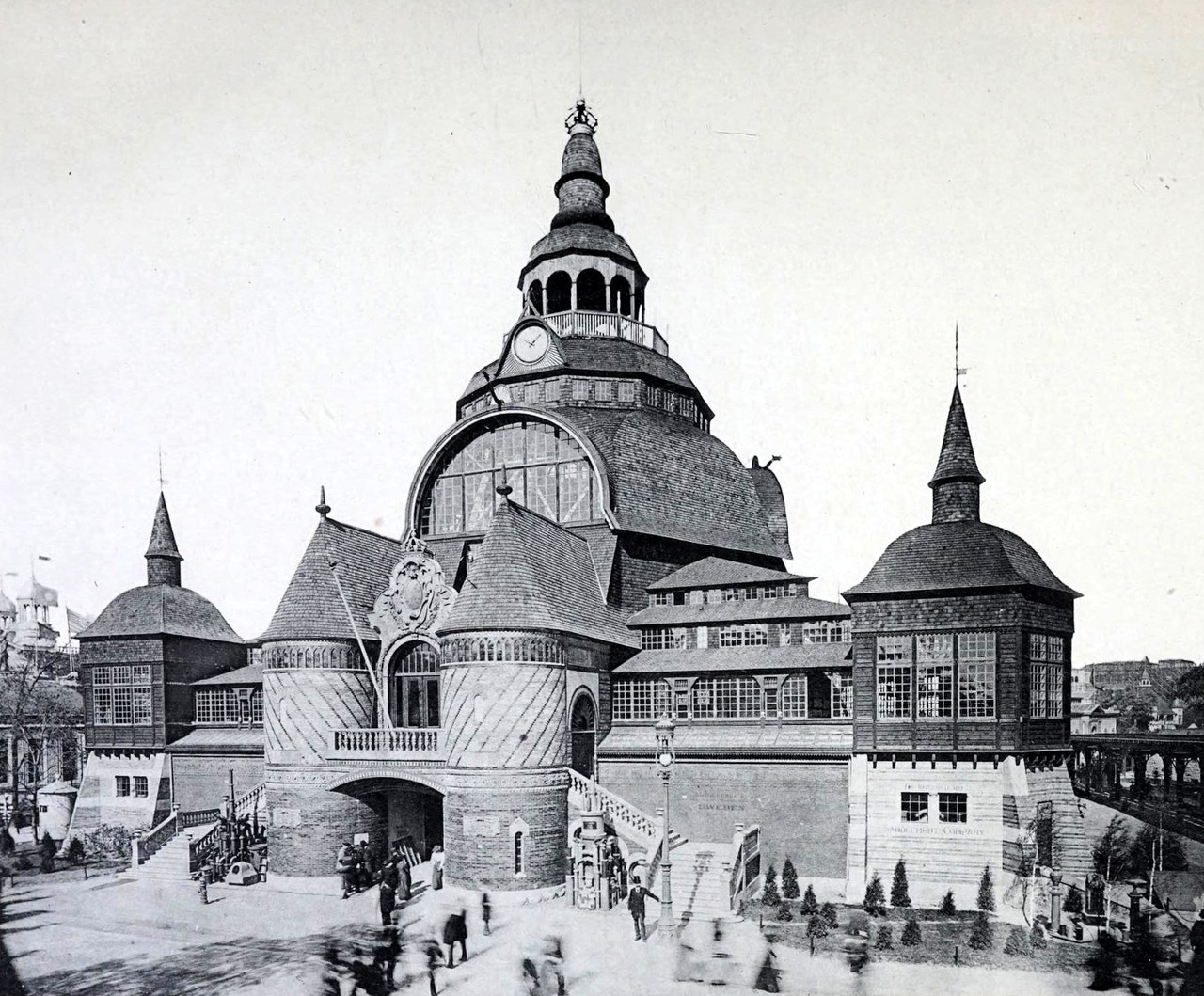
The Building That Was Shipped to Chicago Piece by Piece: The Swedish Pavilion
The Swedish Pavilion was designed by Swedish architect Gustaf Clason for the 1893 World's Columbian Exposition in Chicago. This grand structure was built to showcase Sweden's cultural heritage, artistic achievements, and industrial prowess on the world stage.
The Swedish Pavilion blended different architectural styles, combining elements of traditional Swedish craftsmanship with modern influences. Its façade had intricate wood carvings and decorative motifs that reflected Sweden's artistic traditions. The building was constructed in Sweden and then shipped to Chicago piece by piece. The building cost $40,000 to erect. During the World's Columbian Exposition, the Swedish Pavilion promoted Swedish culture, industry, and trade. It offered exhibitions of Swedish art, handicrafts, and innovations.
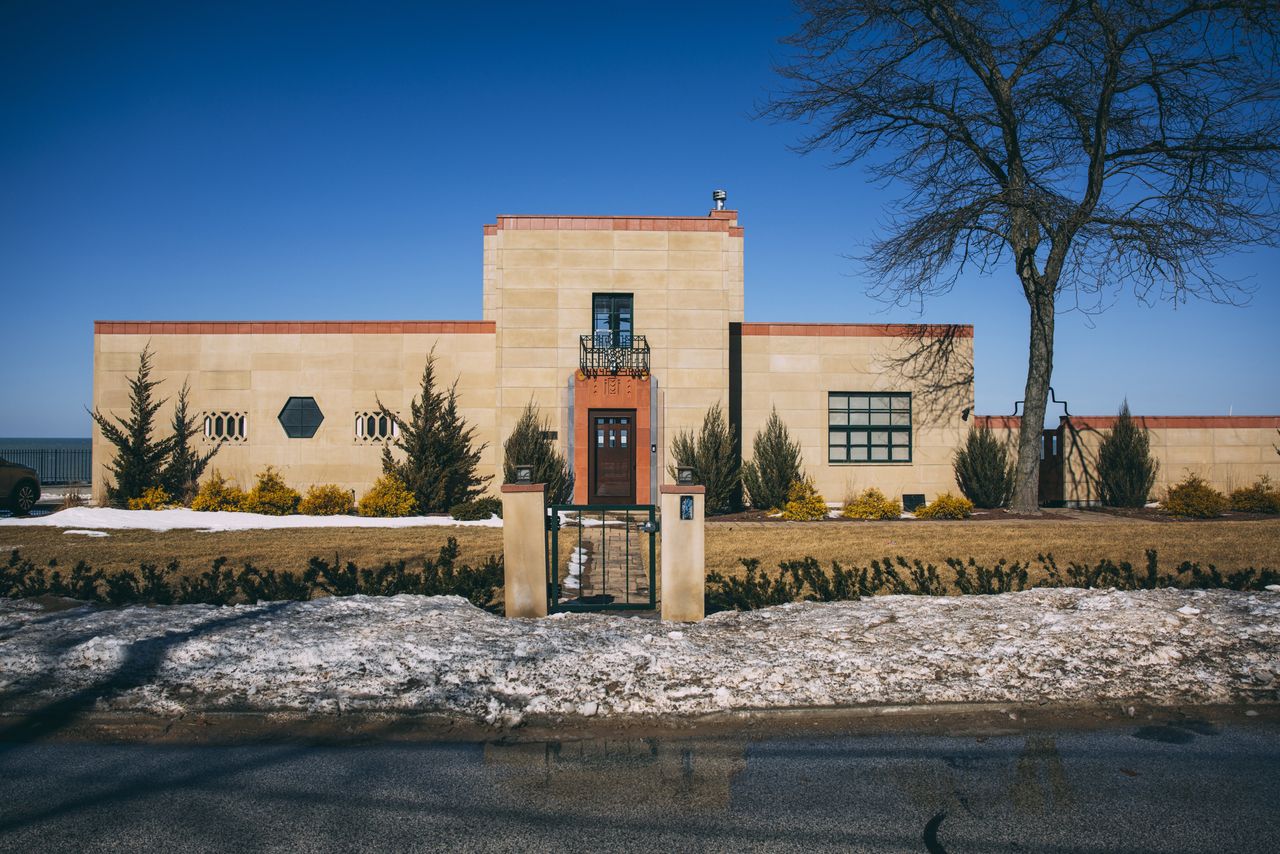
The House That Was Designed to "Never Need Repairs": The Wieboldt-Rostone House
The Wieboldt-Rostone House, in Gary, Indiana, was designed by Walter Scholer in collaboration with William Heyer. Completed in 1933, the residence was built as a demonstration home for the Century of Progress International Exposition, held in Chicago in 1933-1934.
The Wieboldt-Rostone House was built to showcase the latest advancements in construction materials and techniques, particularly focusing on the use of Rostone, a patented synthetic stone product developed by the Rostone Corporation. The house featured a sleek modern design, with clean lines, geometric shapes, and innovative building materials. Although it was billed as "never needing repairs," the house started to show significant wear and tear by the 1940s. It was renovated in the 1950s.
Today, the Wieboldt-Rostone House is a historical landmark, providing a glimpse into the architectural trends of the early 20th century. While it is not open to the public for regular visits, the house occasionally hosts special events and tours. In 2022, the house was closed for an improvement project.

From Norway to Wisconsin and Back to Norway: Little Norway
Little Norway, located in Chicago, was not a permanent landmark but rather a temporary attraction built for the 1893 World's Columbian Exposition, also known as the Chicago World's Fair. Designed by a team of Norwegian architects and craftsmen, Little Norway was built to showcase Norwegian culture, heritage, and craftsmanship to the millions of visitors attending the fair.
The attraction featured replicas of traditional Norwegian buildings, including stave churches, log cabins, and farmhouses, all crafted to resemble their counterparts back in Norway. Visitors to Little Norway could experience Norwegian folk music, dance performances, and traditional crafts. They could even sample authentic Norwegian cuisine.
In 1935, the building was moved to Wisconsin and used as a public attraction. In 2015, however, Little Norway closed due to financial difficulties. Finally, in 2017, the building was moved to Norway.
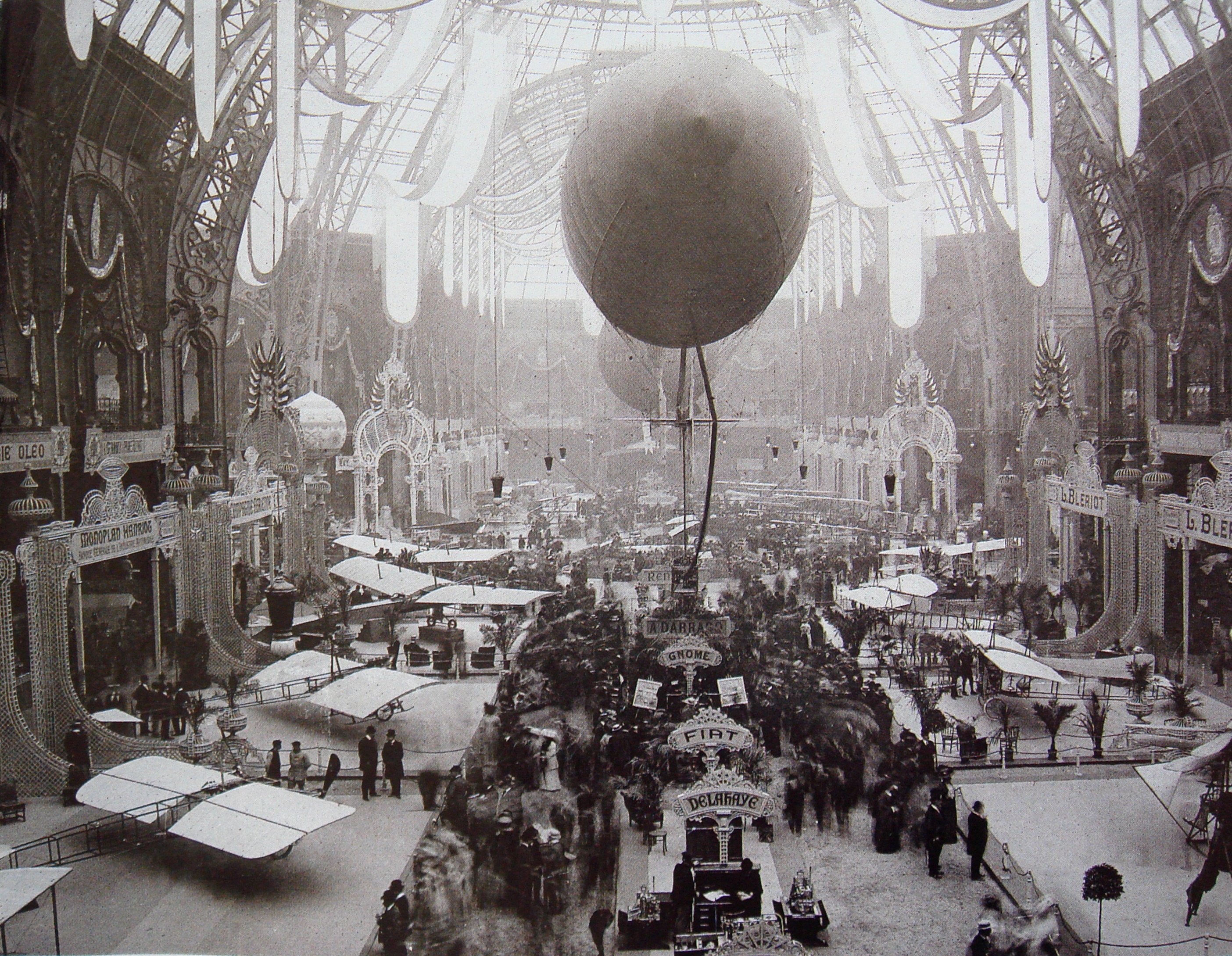
A Building "By the French Republic to the Glory of French Art": The Grand Palais
The Grand Palais was designed by a trio of architects - Henri Deglane, Albert Louvet, and Albert-Félix-Théophile Thomas. It was constructed for the 1900 Exposition Universelle, the world's fair that celebrated the dawn of a new century.
Located on the Avenue des Champs-Élysées, the Grand Palais showcased French art, culture, and technological prowess, with its imposing iron and glass structure serving as the perfect backdrop for the displays of innovation and creativity. During the world's fair, it hosted exhibitions on art, industry, and science.
Today, the Grand Palais has become a cultural hub in the heart of Paris and a must-see destination on many tourist websites. It hosts a myriad of events from art exhibitions and fashion shows to concerts and sporting competitions. It attracts roughly two million visitors annually.
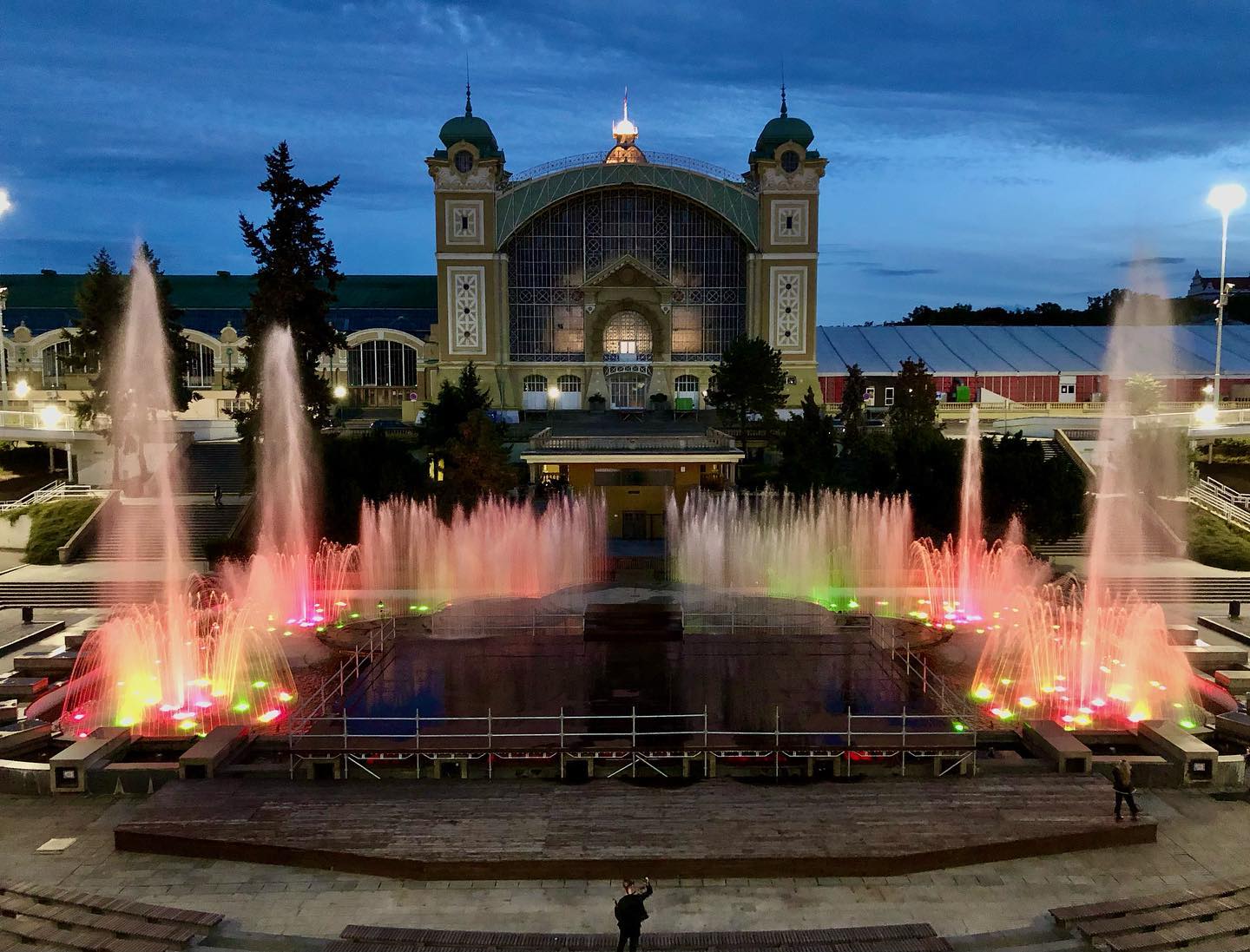
The Czech Eiffel Tower: The Křižíkova Fountain in Prague
The Křižíkova Fountain was designed by the Czech engineer František Křižík and was built for the 1891 Prague Industrial Exhibition. The fountain was not just a display of water and light; it featured intricate water jets, colorful lighting effects, and synchronized music performances. Its grandeur and beauty left spectators in awe, earning it the title of the "Czech Eiffel Tower."
In 1891, the fountain used 26 arc lamps as well as 50 water jets. The fountain was renovated almost 100 years later and opened to the public on May 15th, 1991. Today, the Křižíkova Fountain is used for short-term events, such as concerts, shows, and plays. The fountain uses 1,300 lights, almost 3,000 water jets, and 49 water pumps.
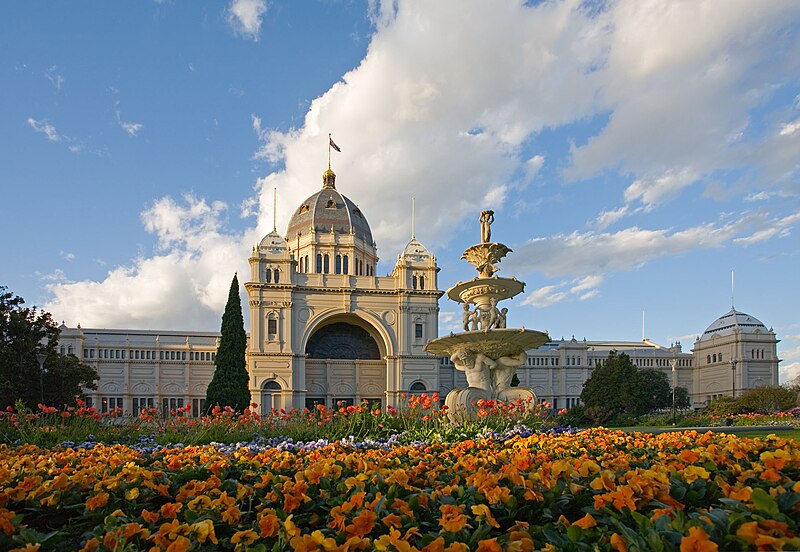
A UNESCO World Heritage Site: The Royal Exhibition Building, Melbourne
The Royal Exhibition Building was designed by Joseph Reed. Constructed in the late 1800s, it was built to host the 1880 Melbourne International Exhibition, a celebration of Australia's progress and achievements.
The Royal Exhibition Building was the centerpiece of the exhibition, showcasing the nation's cultural, industrial, and technological advancements. Its majestic dome had intricate ornamentation and towered over the surrounding Carlton Gardens. After the 1880 Melbourne International Exhibition, the building hosted the Centennial International Exhibition in 1888 and the opening of the first Parliament of Australia in 1901. It has also hosted numerous exhibitions, trade shows, and cultural events.
In 2004, it was categorized as a UNESCO World Heritage Site. As it is located near the Melbourne Museum, it now hosts events largely tied to the Melbourne Museum. Visitors can also take guided tours.
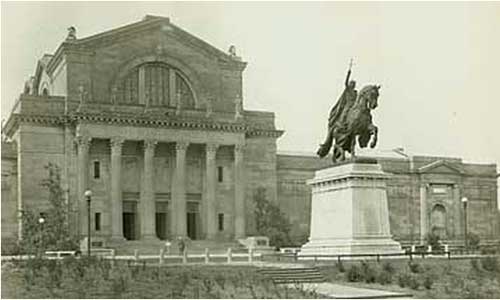
An International Museum in the Midwest: Saint Louis Art Museum in Missouri
The Saint Louis Art Museum is a cultural treasure in the heart of Forest Park in St. Louis. Designed by architect Cass Gilbert, the building was constructed for the 1904 Louisiana Purchase Exposition, also known as the St. Louis World's Fair.
The Saint Louis Art Museum was built to showcase a vast collection of artworks from around the world during the world's fair, highlighting the city's commitment to arts and culture. Its neoclassical façade and grand interior spaces provided the perfect backdrop for visitors to immerse themselves in the beauty and creativity of a variety of art exhibitions.
Today, the Saint Louis Art Museum offers an extensive collection that spans thousands of years and attracts about half a million visitors every year.
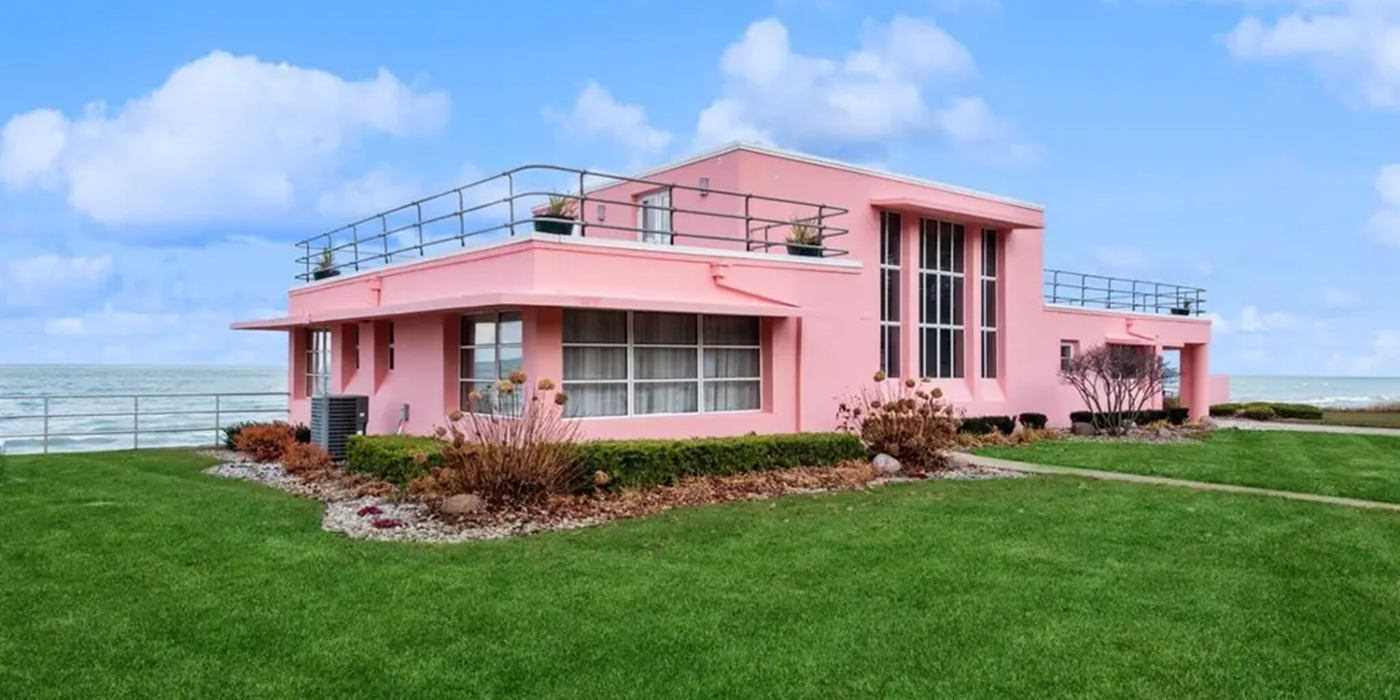
Pink and Flamboyant: The Florida Tropical House
The Florida Tropical House was designed by architect Robert Law Weed and constructed for the 1933-1934 Century of Progress International Exposition, also known as the Chicago World's Fair. The building boasted a unique blend of art deco and tropical architectural styles and is located in Beverly Shores, Indiana. Set against the backdrop of Lake Michigan, this pink waterfront house gave visitors an idea of what living in Florida was like.
Indiana Landmarks leased the home from Indiana Dunes National Park and then subleased it to tenants who would renovate it. The beachfront property boasts four bedrooms, four bathrooms, and over 3,400 square feet of space. In January of 2024, the home was listed on the market for $2.5 million, for a 52-year lease.

A Dutch Building in the Center of Massachusetts
The Dutch House was built for the 1893 World's Columbian Exposition in Chicago, Illinois, serving as a showcase of Dutch heritage and craftsmanship. Designed by architect A. D. Seymour, the residence was built to replicate the 1591 Franeker Town Hall in Friesland. It featured a distinctive gambrel roof, wooden clapboard siding, and ornate gables with decorative trim. Its interior had antique furnishings and Dutch-inspired decor.
During the world's fair, Captain Charles Brooks Appleton of Brookline became enchanted with the building. After the fair ended, he purchased the building and moved it to Brookline, Massachusetts. Today, the Dutch House is used as a multi-unit residential building.
More for You
This is the salary it takes to be considered rich in every state
Supreme Court justices appear poised to offer Trump some immunity – potentially delaying Jan 6 trial
Netflix’s new movie trailer slammed as ‘AI propaganda’
New Meal at Costco Is Even Better Than Takeout
5 Things the Average Retiree Won’t Be Able to Afford in the Next 5 Years
$20 Minimum Wage Backfires as Restaurants See Orders Plummet
The 16 worst-paying college majors, five years after graduation
The Fastest-Selling New Car in Every State
10 best new Netflix originals you need to add to your watch list
The Unexpected Sauce You Should Fry Eggs In For An Elevated Breakfast
Meta's median pay for employees is $379,000 a year
Vince McMahon Ends WWE Ties by Selling Last of TKO Shares
Republic First Bank Seized By Regulators—First Bank Collapse Of 2024
Want the Max $4,873 Social Security Benefit? Here's the Salary You Need.
17 Phrases Older People Use That No One Else Gets
Best Female Villains in Anime, Ranked
Here’s What the US Minimum Wage Was the Year You Were Born
7 weird jobs that are well-paying but nobody knows about, according to a viral Reddit thread
YouTube was the real hero of Google’s Q1 earnings, and it should set off alarm bells at Netflix
Corn Makes This Pasta Sauce So Silky Smooth, Without Any Cream
I've been to more than 30 countries, but I'll always think this European city is the best destination for children of any age
- Of all the countries I've been to, I think London is the best place for kids of any age.
- My husband and I took our son to the city when he was a baby, a preteen, and a teenager.
- The city has many museums, parks, and other activities to entertain kids of all ages.

As a travel writer, one of my greatest loves is experiencing a new country , region, or city with my son. But one place has always been our favorite: London.
The city, which is projected to be the top summer travel destination in 2024 , is popular among tourists due to its iconic sites, gardens, and history. But if you ask me, London is also the best spot to bring your kids, especially if they range in age.
I've been to over 30 countries, and out of all of them, London is the place we chose to bring our child when he was a baby, a preteen, and a teenager.
From the city's amazing architecture to its bustling museums , there are plenty of activities to catch any kid's attention. Here's why I'll always believe London is a terrific destination for children of any age.
Transportation in London is usually a breeze
In my experience, arriving in and getting around London is pretty easy. The Heathrow Express, an airport rail link operating from London Heathrow Airport, can transport passengers to Paddington Station in 15 minutes or less.
Once in the city, we take the Tube, a rapid underground transit system, to get to the big sights. Children under 11 travel for free when accompanied by an adult, and discounts are available for older kids.
When my son was 11, he loved the Hop-On, Hop-Off bus, a touristy but fun experience that takes passengers to major city sights like Big Ben and the Tower of London. Passengers can get off the open-top double-decker vehicle anytime, take a tour, grab a bite to eat, and then continue their journey when the next bus comes.
I recommend getting a 48-hour pass because you can get a great city overview on the first day and then dig deeper into certain spots on the second.
Finally, in an emergency like an infant meltdown or a toddler tantrum, Ubers are almost always accessible.
The city is full of parks for children to play in
London has incredible green space for such a large city. Many of the city's parks are free to the public and are wonderful spots for kids to picnic, sightsee, and burn off energy.
Regent's Park has gorgeous gardens, a playground, and a lake. At Hyde Park, families with two adults and up to four children can swim in the Serpentine Lido for only £15, or about $19.
Related stories
Greenwich Park is another one of our favorites because it offers beautiful views of the River Thames and an expansive lawn surrounding the Royal Observatory and Prime Meridian.
There's no need to worry about a language barrier
I'm a seasoned traveler, but language barriers can still throw me for a loop. I always try to learn a few simple phrases, but not understanding a language and juggling a kid can cause a lot of stress.
In London, there's no need to worry about a language barrier. Though over 300 languages are spoken in the city, most people know English.
There might be different words for various objects — like "nappy" or "diaper" — but I've easily communicated with the people around us in London.
London is full of kid-friendly eateries
Each time we've traveled to London, I've seen terrific restaurant options for palates of all ages. For example, Gordon Ramsay's Bread Street Kitchen offers a deal so children 8 and under dine for free when ordering off the kids' menu.
Delicious international foods , such as Italian, Indian, Thai, and Ethiopian cuisine, are also available all over London. Fast-food chains like Simit Sarayi and Yo! Sushi are also located throughout the city.
We loved taking our son to sample sweets at Harrods' Food Halls and enjoy sandwiches and scones at St. Martin-in-the-Fields' Café in the Crypt in Trafalgar Square.
There are tons of entertaining museums that offer free admission
London offers nearly 200 museums for patrons to soak up the city's culture and history. They're the perfect places to seek shelter from rain or serve as quiet, interesting respites for a napping baby.
On our first family trip, we strolled our then 8-month-old son through several wings of The British Museum as he peacefully slept. When he was 11, we hit The British Library to marvel at the Magna Carta and checked out the artwork at the National Portrait Gallery.
On our most recent excursion, we watched as our 16-year-old perused the masterpieces at Tate Modern. Most of these museums offer free admission, great kids' activities, hands-on exhibitions, and terrific gift shops.
London is close to tons of easy day-trip options
If you're a traveler who needs a change of pace or scenery every few days, London is a gateway to several day-trip destinations. Places like Oxford, Cambridge, Bath, Birmingham, and Brighton are only a bus ride away.
Visiting cities like Paris , Brussels, and even Amsterdam in a single day is doable thanks to the Eurostar train, which runs through several Western European countries.
The bottom line: London's fun, full of great transportation options, and offers endless activities to entertain the entire family. It's truly a winner for kids of all ages.
- Main content
10 must-visit Art Nouveau houses and mansions in Brussels
01 March 2022

At the end of the 19 th century, Victor Horta broke with the dominant, traditional architectural styles in Brussels, giving birth to the iconic Art Nouveau genre. Along the streets of our capital, numerous houses and mansions bear witness to the emergence and blossoming of this unprecedented style.
Horta, Hankar, Van de Velde and other great names in Brussels architecture drew their inspiration from the organic forms of nature, sometimes with a touch of Japanese inspiration. The capital’s appearance was transformed and its facades were brought to life in magnificent fashion. To make sure you don’t miss a thing, we’ve put together a top 10 of Brussels’ unmissable Art Nouveau houses and mansions!
1. Solvay House
Solvay House is regarded as one of Victor Horta’s finest works, which unsurprisingly lead it to be added to the list of UNESCO World Heritage Sites in 2003. It was commissioned by industrialist Ernest Solvay, who gave Horta an illimited budget to complete the masterpiece. Standing on the chic avenue Louise, it is a perfect example of how the well-to-do families of 19 th century bourgeoisie lived.
Booking required . Thursday and Saturday, from 10:00 to 15:40.
2. The Hannon House
Closed to the public for several years, this little Art Nouveau gem will reopen its doors in 2023. Built by Jules Brunfaut for Edouard Hannon, an aesthete and collector, Hannon House has exceptional architecture, furniture and decoration. On the first floor, the building will also present a temporary exhibition lasting several months on Belgian Art Nouveau (Hankar, Serrurier-Bovy and van de Velde).
.jpg/_jcr_content/renditions/cq5dam.thumbnail.48.48.png)
3. Cauchie House
Built in 1905, the Cauchie House, that dates back to 1905, was named after its original owner Paul Cauchie. Aside from its superb round window, the building's facade is magnified by the presence of several large sgraffiti, which make the building stand out and are evidence of Cauchie’s decorative talent.
Booking required . Every first weekend of the month, from 10:00 to 13:00 and from 14:00 to 17:00.
4. Autrique House
Autrique House, designed by Victor Horta in 1893, is the first large town house that the great architect built, almost at the same time as he designed the Hôtel Tassel. Here too the structural and decorative innovations are characteristic of Art Nouveau.
Booking required . Wednesday to Sunday, from 12:00 to 18:00.

5. The Horta Museum
The Horta Museum is housed in two connected buildings: The architect’s house and his workshop. They are the perfect examples of the peak of Art Nouveau. Both buildings were bought by the commune of Saint-Gilles in the 60s and turned into a museum which opened in 1969.
Booking required . Tuesday to Friday, from 14:00 to 17:30. Saturday and Sunday, from 11:00 to 17:30.
6. The Max Hallet House
Buit in 1903 by Victor Horta, The Max Hallet House, on the prestigious avenue Louise, is characterised by its sober facade. This simplicity isn’t just down to the logical evolution of Art Nouveau architecture around 1900, it’s also because of the building’s original purpose, which was to be both the home and office of lawyer Max Hallet.
Visits can be booked via victorhorta.be .

7. The Belgian Comic Strip Center
The Belgian Comic Strip Center, a former textiles warehouse, was designed by Victor Horta for textile merchant Charles Waucquez. Bought by the government in the 80s to save it from being demolished, it now houses a centre dedicated to Belgian comic strips.
Online booking . Tuesday to Sunday, from 10:00 to 18:00.
8. Tassel House
Tassel House was declared a UNESCO World Heritage Sites in 2000. With its audacious bow-window and remarkable light wells, this building left a lasting mark on the history of architecture.
Visits can be booked via arkadia.be .
9. Foundation Frison Horta
Frison House is a beautiful building located on rue Lebeau, in the centre of Brussels. It was commissioned in 1894 by renowned lawyer Georges Frison, who lived and worked there. Murals and other playful nods to nature are present on every floor. Now it is the home and workspace of the Frison Horta Foundation . This arts centre is devoted to promoting exchanges between Indian and European cultural traditions, with an eye on the crafts of yesteryear. This living museum is a unique time capsule of 19th-century Gesamtkunstwerk, a jewel designed by none other than the grand master, Victor Horta himself.
Guided tours by appointment only . Monday to Saturday, from 9:30 to 17:30.

10. Van Eetvelde House
According to Victor Horta himself, van Eetvelde House, which was declared a UNESCO World Heritage Sites in 2000, was the most daring of his entire oeuvre. The man who commissioned it, politician Edmond van Eetvelde was someone who believed in modernity and architectural innovation. He gave Horta free reign to let his artistic inspiration run wild when he commissioned him to design a home for his family.

The Art Nouveau Pass lets you discover Brussels’ Art Nouveau gems at an unbeatable price. Choose 3 sites from a list of 9 emblematic constructions, like Cauchie House, the Horta Museum, Autrique House and Solvay House.
The pass is valid 9 months, to the great delight of all architecture fans!
Practical info
Solvay house.
Architect: Victor Horta - 1895/1898 This luxury townhouse was built by Victor Horta in 1894 for the son of captain of industry Ernest Solvay. The architect was given “carte blanche” and designed the interior and the furniture down to the smallest detail. On the façade, two symmetric bow windows surmounted by balconies are seen to protrude across two floors. Indoors it is a visual extravaganza, with the sheer range of red-orange hues on offer only acting to underpin the atmosphere of luxury and comfort. A must-see building. Please note : Children under 12 years of age are not admitted to the guided tours.
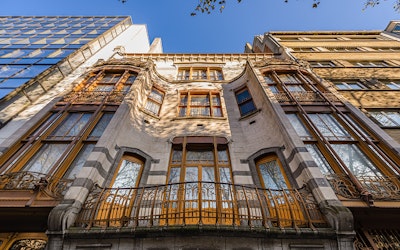
Museum Horta
The Horta Museum is housed in the house and studio of the architect Victor Horta (1861-1947). Both buildings were built from 1898 to 1901 and are typical of the height of Art Nouveau. The interior of the house has been largely preserved: mosaics, stained-glass windows, furniture, wall paintings form a harmonious whole that shows subtlety down to the smallest detail. The museum is also a centre for research on Victor Horta and Art Nouveau. The architect's personal archive, a collection of plans of his buildings and the library are accessible to the public by appointment. Reservation of a time slot online is mandatory. Last access at 16:45.
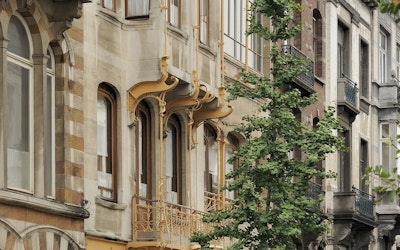
The Cauchie House
The Cauchie House is one of the most exceptional Art Nouveau masterpieces in Brussels. Built in 1905, it was originally the home to Paul Cauchie and Caroline Voet, a couple of artists and decorators. The majestic sgraffito on the façade and the opulent decorations of the bel-étage served as a manifesto for their artistic skills. We invite you to join us for a guided tour to discover its history and unique artworks. Open on the first weekend & the third Saturday of the month. Individual guided tours, group guided tours, private and corporate events.
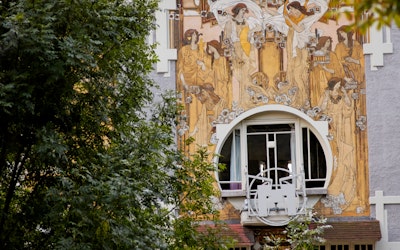
Tassel House
This building is considered the founding work of Art Nouveau in Brussels. It was designed in 1893 by master architect Victor Horta, commissioned by its owner Emile Tassel, a professor at the ULB and a Freemason, like Horta. A house designed to accommodate a bachelor living with his grandmother, Tassel wanted to be able to receive his friends and continue his scientific work. The principal elements of Art Nouveau are used here: apparent metal structure, integration of the decoration into the structure, large amounts of natural light, etc.

MIM - Musical Instruments Museum (MRAH)
As soon as it opened at the end of the 19th century, the luxurious Old England department store earned an excellent reputation for its highly distinctive building. The entrance to the building is a jewel of the Art Nouveau style, while the rest is in perfect harmony with the neoclassical ensemble on the Place Royale, and just around the corner from the Grand-Place and Central Station, no less! With a wealth of some 9.000 instruments, some 1.200 of which are on permanent exhibit, the museum's reputation is mainly built on its extraordinary collections. Once inside, you'll embark on a true tour of the musical world. After your visit, the instruments and their history will no longer hold any secrets: from the viola da gamba from the Court of Brussels to the 20th century theremin, and even including the African kora! The mim is nothing other than a place to experience music. A visitor's guidance system allows you to explore the thematic tours to the tune of the melodious sound of the instruments presented. A program packed with concerts, demonstrations and workshops for the young and the not so young makes the mim experience even better. The mim has its own concert hall, specialized library, museum shop, workshop for restauration and conservation of musical instruments and is crowned by a restaurant with panoramic view over Brussels.
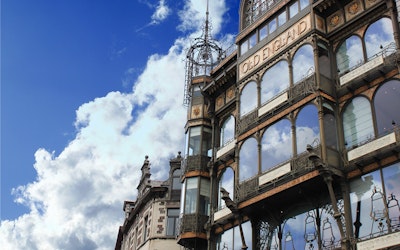
Autrique House
Maison Autrique is the very first striking building Victor Horta designed. It was built in 1893 and it's a major part of Brussels' architectural patrimonium. It underwent an exemplary restoration and is now open to the public. This house is an important Art Nouveau touchstone: we can already see elements that form a part of the continual explorations of the architect. It's interior division is full of surprises: François Schuiten and Benoît Peeters have staged an original scenography, from the cellar to the attic. The house has thus become a sort of tribute to Brussels' private architecture, while at the same time tickling the imagination. The house hosts intimate concerts, temporary exhibitions and workshops for children.

Comic Strip Museum (Centre Belge de la Bande Dessinée)
A world full of comics An accomplished attraction located in the heart of Brussels, the Comics Art Museum has been honouring the creators and heroes of the 9th Art for 30 years. The regularly renewed permanent exhibitions and a diversified programme of temporary exhibitions enable visitors to discover the countless aspects of comics art. Famous characters lead the way towards new adventures, an encounter with a world where creativity has no limits. Enhanced by an exceptional Art Nouveau home designed by Victor Horta, the Comics Art Museum is just as much a tribute to the pioneers as a glimpse of contemporary comics art.
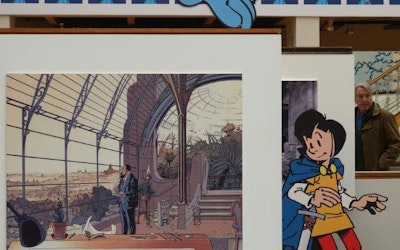
Max Hallet House
House dating from 1904, built according to the plans of V. Horta and offering a symphony of colours, whorls and lights to lift the heart and please the eyes. The lawyer Max Hallet had it built to receive his friends and clients in a magnificent setting. Victor Horta built it in the image of its occupant, laying out rooms for living and areas for receiving visitors.
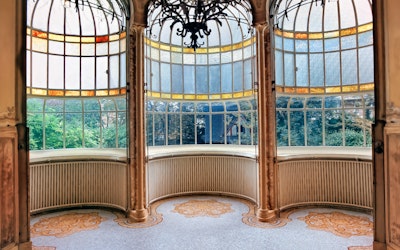
Foundation Frison Horta
RESTORATION. PRESERVATION. SHARING. Foundation Frison Horta is an Active Cultural Bridge Between East & West Restoring, Preserving and Sustaining Rich Art & Craft of the By-Gone Era, in an Artistic Art-de-Vivre form. “Excellence in Craftsmanship and Métiers d’Art”. The Foundation Aims to Foster Greater Understanding and Appreciation of the Rich Heritage & Cultural Traditions of the East particularly of Indian Sub-continent In Europe and vice versa. Foundation Frison Horta is working Extensively in Restoring the image of Brussels with Art Nouveau as its National Identity to a Global Audience. Maison Frison is the Only one of a kind house of Victor Horta that was Constructed for Double Function Maurice Frison ( Lawyer of the Court of Belgium) office and living space. Foundation frison Has Continued the double function of Horta with Foundation museum activities and the living space making it a One of a kind in the world “A Living Museum” an Exceptional Unique Time capsule of 19th Century Total Art, Art Nouveau Gem of Victor Horta! Founder: Nupur Tron Guided visit by appointment only Entry Fee: 39 Euros (Visit+Exposition)
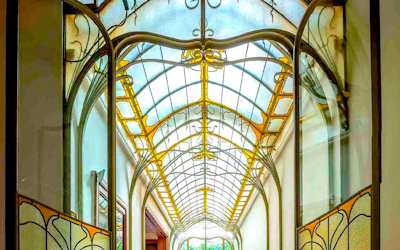
Van Eetvelde Hotel & LAB·An
According to Horta himself, the plans for this house, conceived in 1895, were the most audacious he ever drew. And he did so for a prominent figure, as the client, Baron Edmond van Eetvelde, was the Secretary General of the Independent State of Congo - in reality the unofficial 'Minister of the Congo' - and, therefore, a very close ally of King Leopold II. The future owner asked the architect for a house 'for his family', but with as large a living room and dining room as possible, given his frequent social engagements. The house is unusual in that it is flanked by two other buildings: a building to the left of it, which was intended to serve both as an extension to the original house and as a rental house and a building to the right of it, a small annex to the main house.

Maison Hannon
The Maison Hannon, on the corner of Avenue Brugmann and Avenue de la Jonction, was built in 1902, at the request of the couple Marie and Édouard Hannon, by their friend, the architect Jules Brunfaut. Conceived as a symbolist and dreamlike universe, the house is one of the masterpieces of art nouveau in Brussels, a union of Belgian and French art of the time. Jules Brunfaut, unfamiliar with the new style, was inspired by other architects' houses, such as those of Victor Horta (personal house, Tassel and Wessinger hotels), Ernest Blérot (personal house, now destroyed) and Octave Van Rysselbeghe and Henry Van de Velde (Otlet hotel). Combining the beaux-arts style with that of modernity, or art nouveau at that period, the Maison Hannon is a singular work, an intimate and personal house, bringing together the tastes and passions of its commissioners. The Maison Hannon will open its doors to the public on June 1, 2023, as a house museum.

Le Magasin Wolfers Frères - Musée Art & Histoire

Historical stroll: the Solvay family
The Solvay family and how they left their mark on Brussels

Top 10 masterpieces to discover with the Brussels Card
Discover our top 10 masterpieces to behold in Brussels with the Brussels Card.
Guided tours that showcase Brussels’ heritage.
Discover Brussels' classics with a guide.

IMAGES
VIDEO
COMMENTS
8. Learn about Brussels architecture as you tour the city with Jamal, a local architect and guide. You'll see how the city's architecture has evolved over the past five centuries as you visit highlights such as the Grande Place, Les Galeries Royales Saint-Hubert, the Place De Brouckereplein, and Notre Dame du Sablon, finishing your tour up with ...
Contact e-architect to arrange your architectural tour of the Belgian capital: isabelle (at)e-architect.com / mobile +44 (0)7952 149814. Architecture Tours. e-architect also organise architecture walking tours in other west European cities such as Amsterdam, Rotterdam, Copenhagen, Edinburgh, Berlin, London, Barcelona and Paris.
At the turn of the 20th century. With Victor Horta as its figurehead, Brussels boasts a wealth of Art Nouveau and Art Deco treasures. This route highlights Brussels' key role in the development of these architectural movements. The route takes you from Forest to Saint-Gilles and on to Ixelles, on a journey through the fascinating and vibrant ...
It is an incredible Art Nouveau building from 1905 and in its middle is one of the most beautiful bay windows in Brussels (together with the window in Gustave Strauven's Maison Saint-Cyr on Square Ambiorix). Join Rue Marconi, where you'll find a lot of eclectic and Art Nouveau social housing at number 32 designed by Léon Govaerts, at number ...
Check out our architectural and design tours in Brussels, oriented to design, urban planning and architecture in Brussels, or request that one of our architects prepare a customized itinerary. All our guides are professional architects, who will be happy to prepare your tailor made itinerary .
Full Day Brussels architecture Tour. Architecture highlights of Brussels by Private VIP Bustour (8h) @ Your service! We pass the following impressive places in Brussels : "the Atomium", the flagship building of Expo58 - the world exhibition which was organised on the territory of Laeken in 1958, has become the very symbol of Brussels.
Our most recommended Brussels Architecture. 1. Brussels Atomium Entry Ticket with Free Design Museum Ticket. Discover stunning panoramic views of Brussels and explore exhibitions about Belgium and digital art with this entry ticket to the Atomium. Take a walk through design works from the 20th and 21st centuries with a ticket to the Design Museum.
Discover the mix of influences that make up the architecture of Brussels during this private, half-day architect-led tour through the Belgian capital. Learn about the city's past as the capital of the Spanish Netherlands as you see landmarks testifying to over 500 years of history. Understand the main architectural influences defining the city with explanations from your private architect guide.
Uncover some of the architectural gems of Brussels on this guided walking tour. Marvel at some of the city's most impressive buildings and learn about their history from your authentic local guide. ... Private tour Brussels: Architectural Guided Walking Tour with a Local. Activity provider:Peer-to-Peer Online Platform LocalBini. From $546.28 ...
Full description. Enjoy a 3-hour guided tour on Art Nouveau architecture and Victor Horta. The tour will be led by a local Brussels guide. Discover the most beautiful and impressive Art Nouveau projects by architects who mastered the art of combining iron, glass, wood and stone into an infinite variety of different forms. The tour starts at the ...
Understand Brussels to better defend it! Since 1977, ARAU has been a pioneer of urban tourism in Brussels and has offered unconventional guided tours that raise awareness of urban democracy and the role of residents in the development of their city.Over the decades, ARAU has also developed an expert knowledge of the city's architectural and planning history, which it has passed on through ...
Understand Brussels to better defend it! Since 1977, ARAU has been a pioneer of urban tourism in Brussels and has offered unconventional guided tours that raise awareness of urban democracy and the role of residents in the development of their city. Over the decades, ARAU has also developed an expert knowledge of the city's architectural and planning history, which it has passed on through ...
To find the meeting point for the Architecture Tour of Brussels, head to Godiva Grand Place located at Grand Place 21/22, 1000 Bruxelles, Belgium, where the tour will commence promptly at 08:00 PM. Getting Lost: While wandering the charming streets of Brussels, don't worry about getting lost. Allow yourself to explore the city's nooks and ...
The private architectural tour of Brussels offers a unique opportunity to explore the city's architecture with a trained architect guide. The tour showcases landmarks that reflect over 500 years of history, providing insights into the city's past as the capital of the Spanish Netherlands.
Finally, an Art Deco villa admirable both inside and out. A glimpse into the lives and homes of Brussels's '30s elites begins at Villa Empain—once you've entered through the most Great Gatsby of doors, we might add. The 2,500-square-meter (26,910-square-foot) private mansion in the tranquil Uccle neighborhood, designed by Michel Polak ...
The Architecture Tour of Brussels typically lasts around 3 hours, allowing participants to explore the rich history and diverse architectural styles of the city without feeling rushed. Knowing the ticket prices beforehand allows visitors to plan their budget accordingly, while being aware of the tour duration helps them manage their time ...
Full Tour Description. The Brussels Art-Nouveau guided tour showcases the vibrant architectural legacy of the city, offering a captivating exploration of its 19 communes with stable Art-Nouveau architecture. Saint-Gilles and Ixelles boast houses designed by innovative late nineteenth-century architects, providing a glimpse into the history of ...
From Art Nouveau, Art Deco, typically Brussels eclecticism and modernism to contemporary architecture... Brussels' urban landscape is a patchwork of architectural styles.Stroll along the squares and stately avenues with a guide, or take a peek behind the magnificent facades on an exclusive guided tour of private residences with explore.brussels. ...
Observe how this innovative space was developed with extreme attention to detail. From the ground floor to the attic, this building offers a better understanding of the Art Nouveau movement in Brussels. Opening Hours: Tuesday to Sunday, 2pm-5:30pm. Musée Victor Horta, Rue Américaine 22, 1060 Brussels, Belgium +32 2 543 04 09.
From 10 until 19 november 2023, Urban will organise guided tours in contemporary buildings, open days at architecture offices, seminars, workshops, conferences and exhibitions in the Brussels Capital Region. All these events will be free and open to all. For its 5th edition in 2023, archiweek is opening the doors to projects nominated by the ...
Neoclassical architecture is omnipresent in Brussels, yet it remains less well known than its Art Nouveau or Art Deco cousins. Fortunately, the Brussels Biennale - Neoclassic (BBN) increases the visibility of this remarkable architectural style.In addition to the Palace of Charles of Lorraine - which is the flagship of the genre - the BBN takes its visitors underneath the incredible glass ...
Built for the 1958 Brussels World's Fair (Expo 58), the Atomium represented scientific progress, technological innovation, and the peaceful use of nuclear energy.
Visiting cities like Paris, Brussels, and even Amsterdam in a single day is doable thanks to the Eurostar train, which runs through several Western European countries.
Closed to the public for several years, this little Art Nouveau gem will reopen its doors in 2023. Built by Jules Brunfaut for Edouard Hannon, an aesthete and collector, Hannon House has exceptional architecture, furniture and decoration. On the first floor, the building will also present a temporary exhibition lasting several months on Belgian Art Nouveau (Hankar, Serrurier-Bovy and van de ...